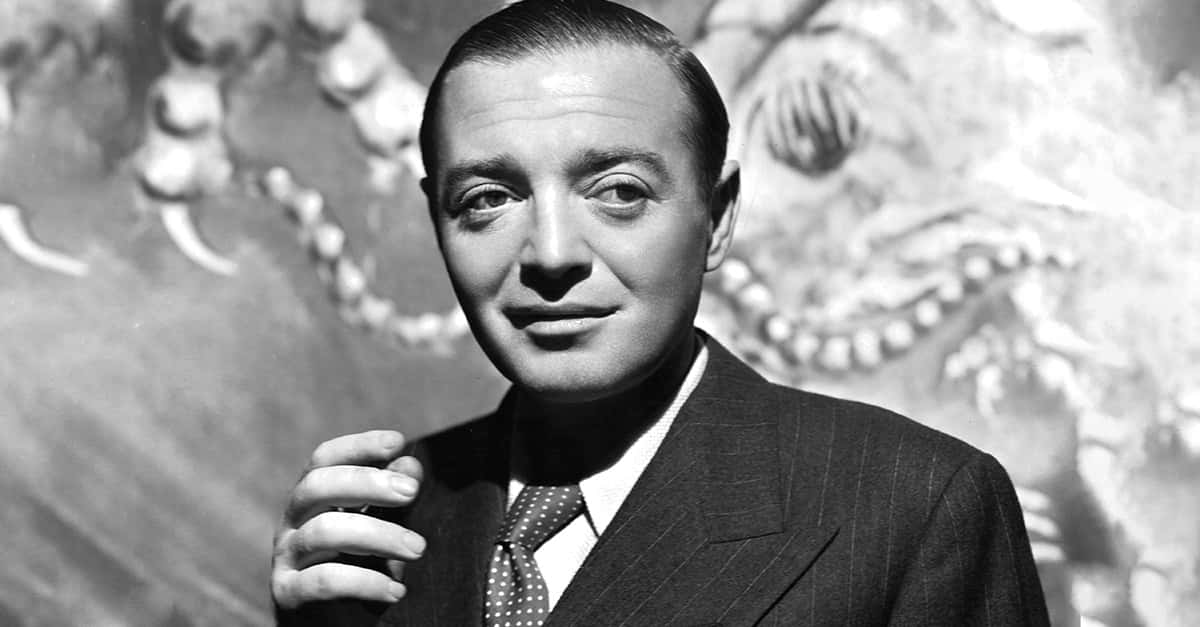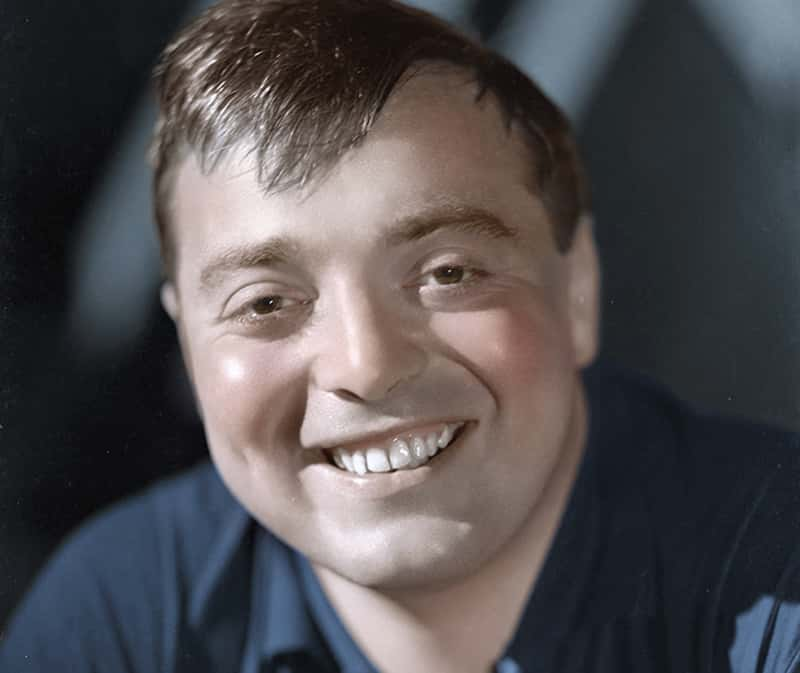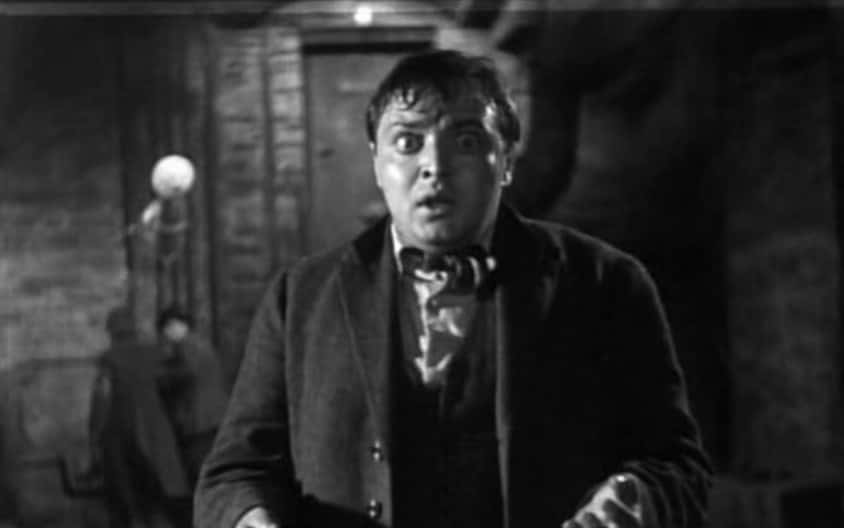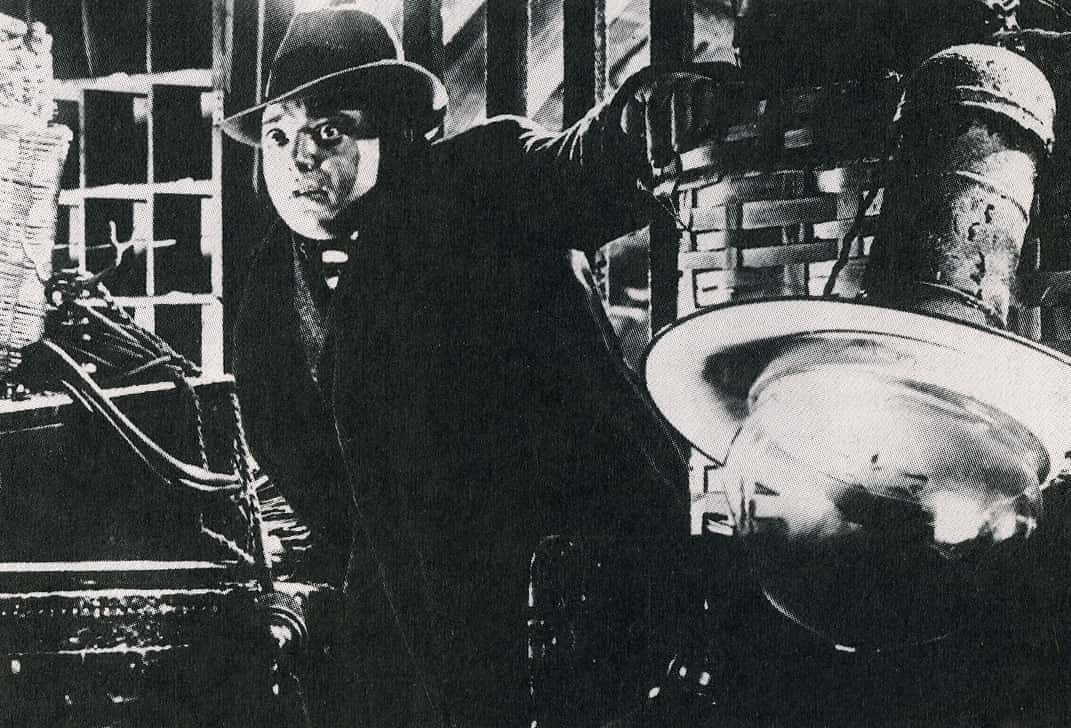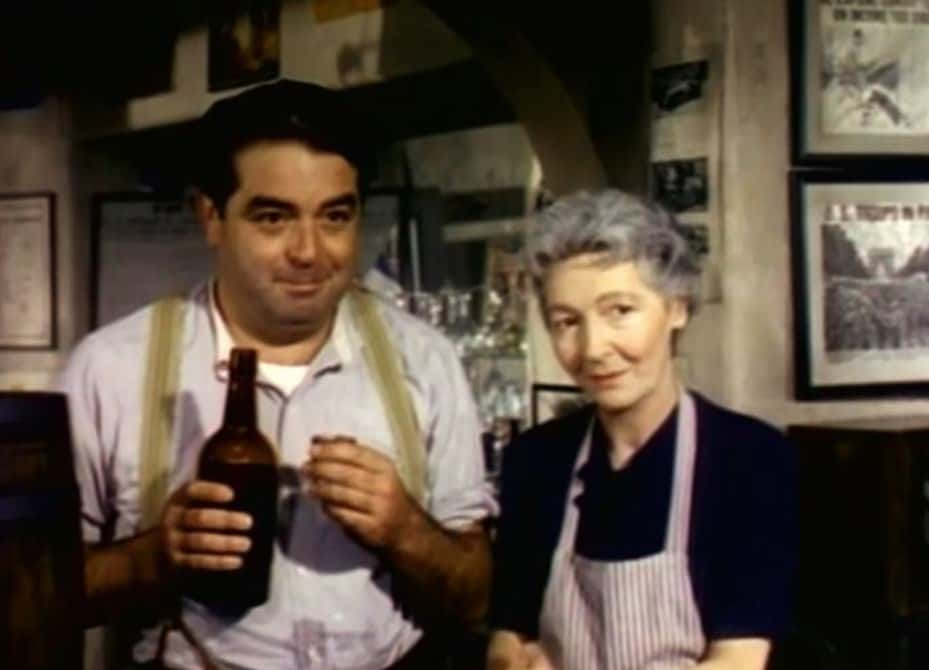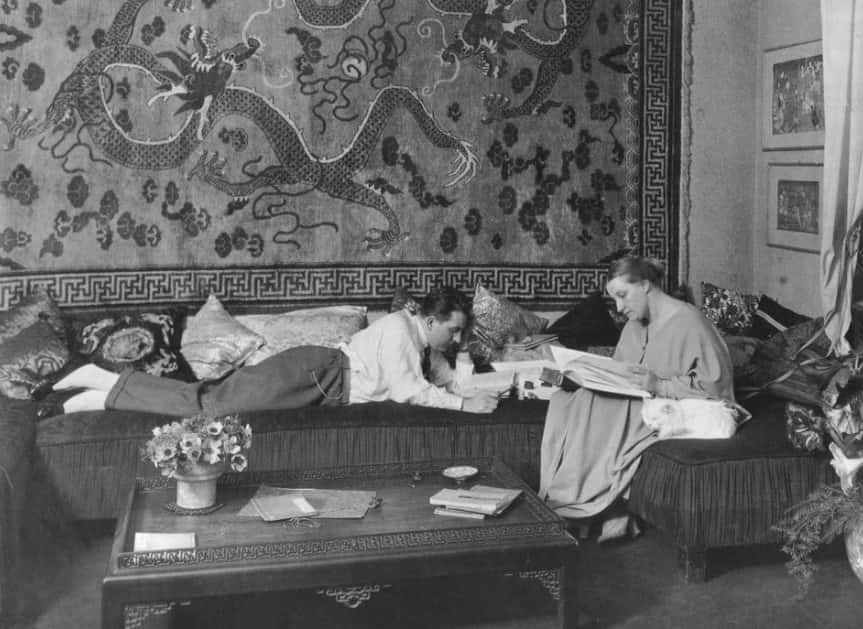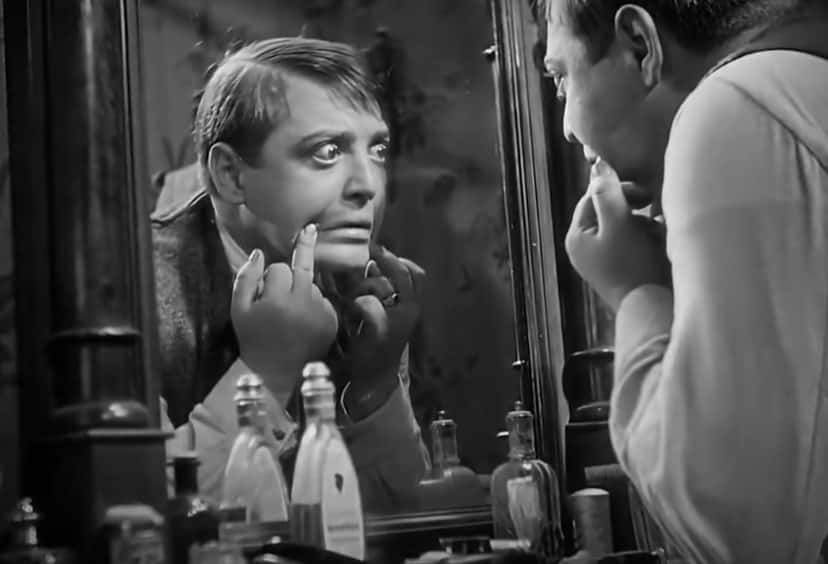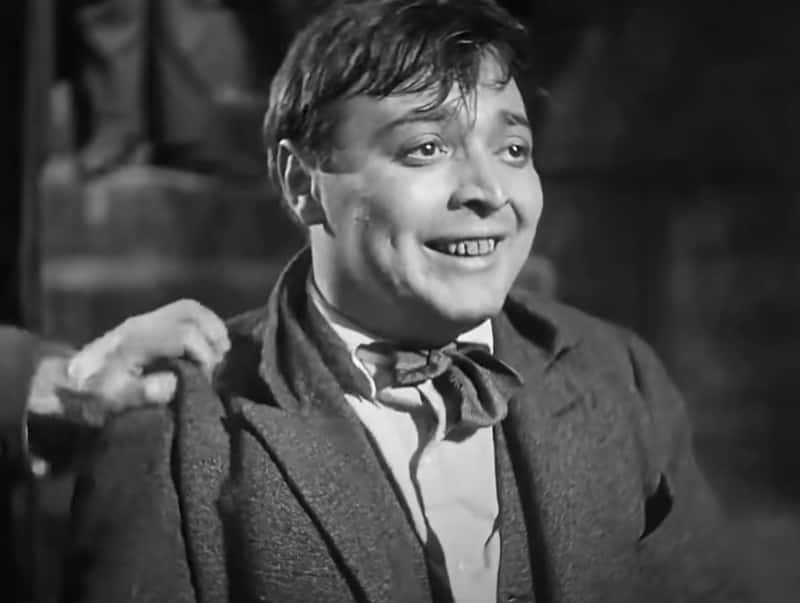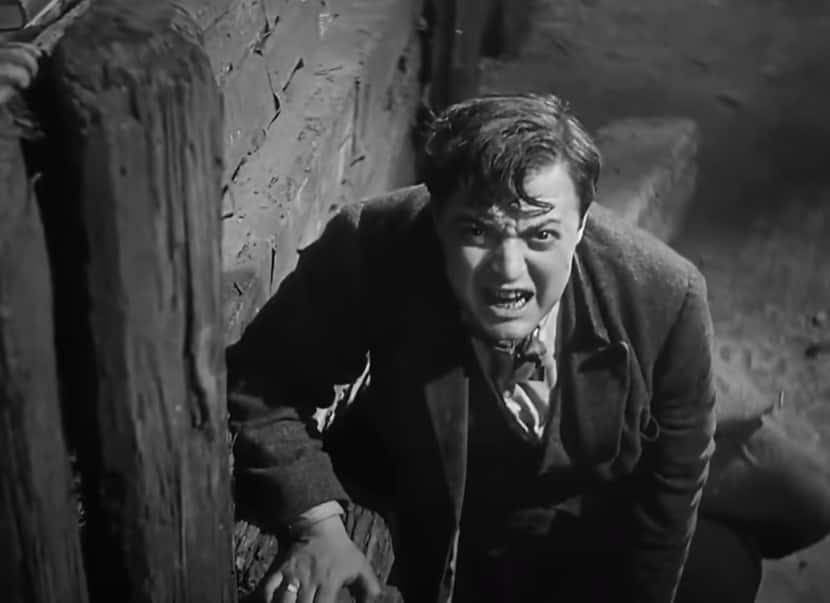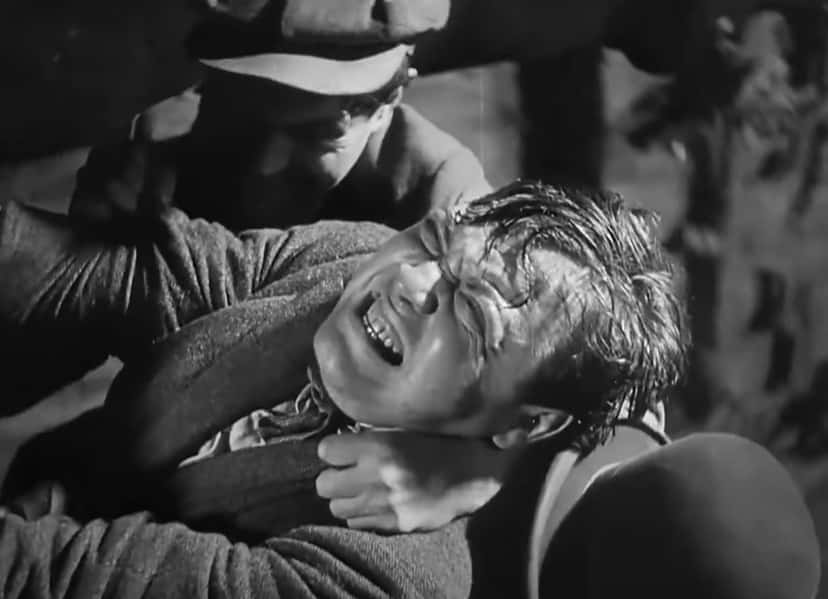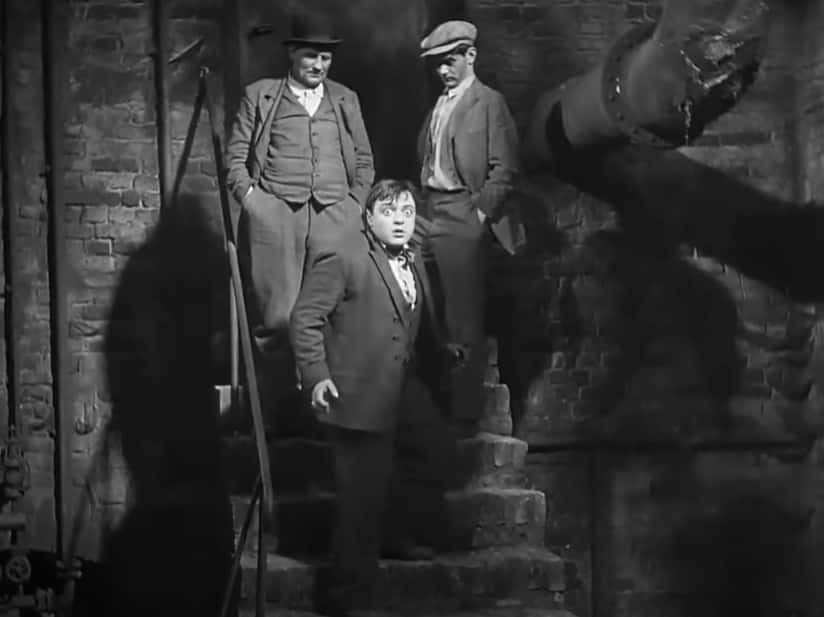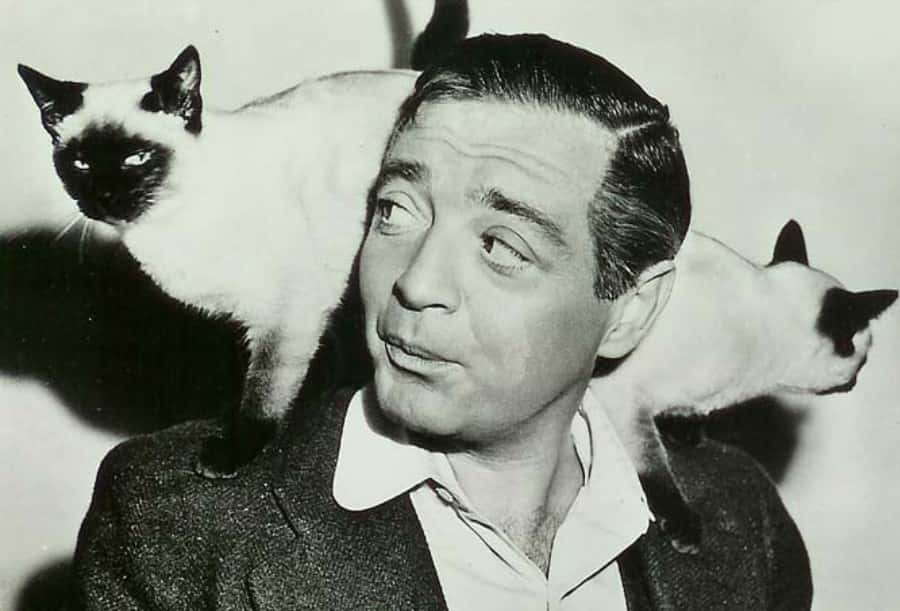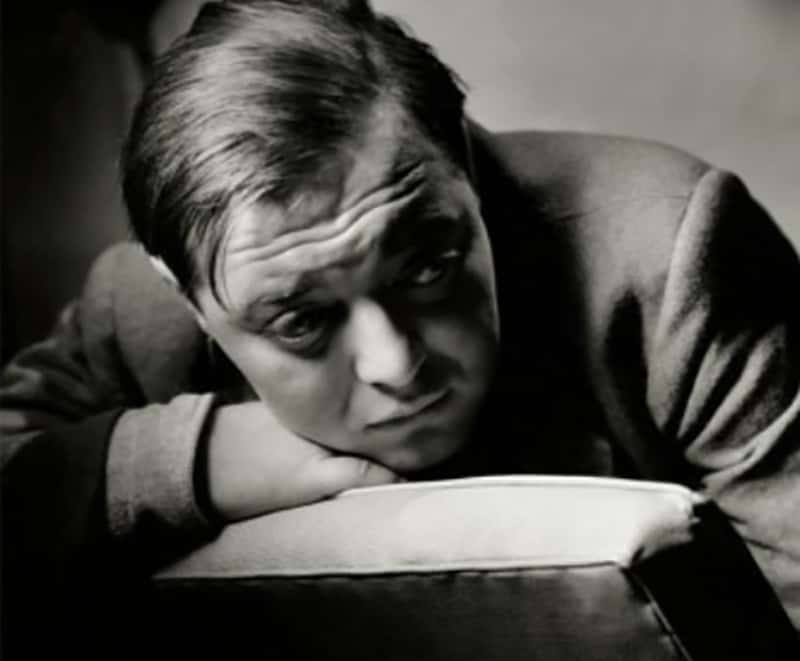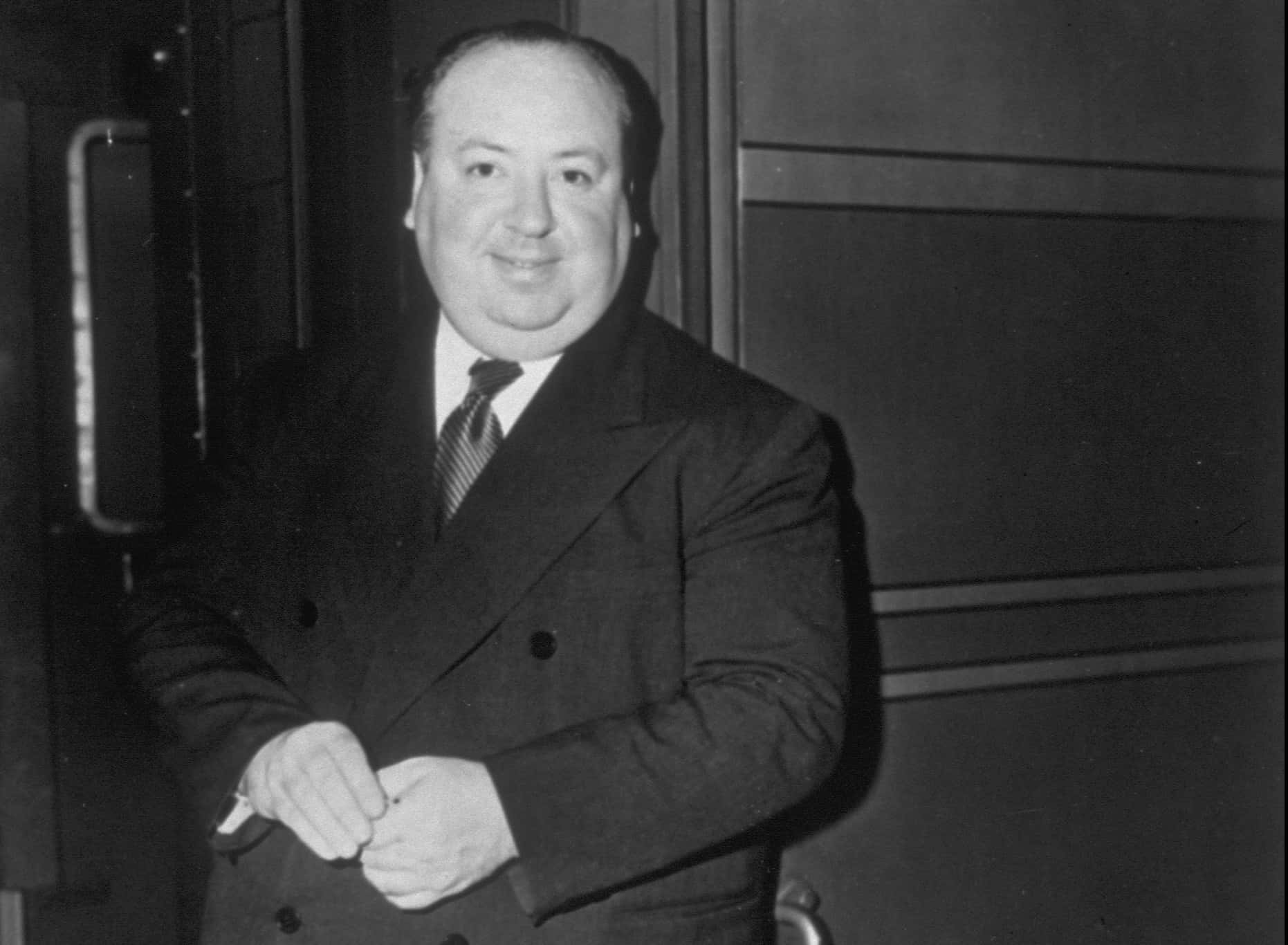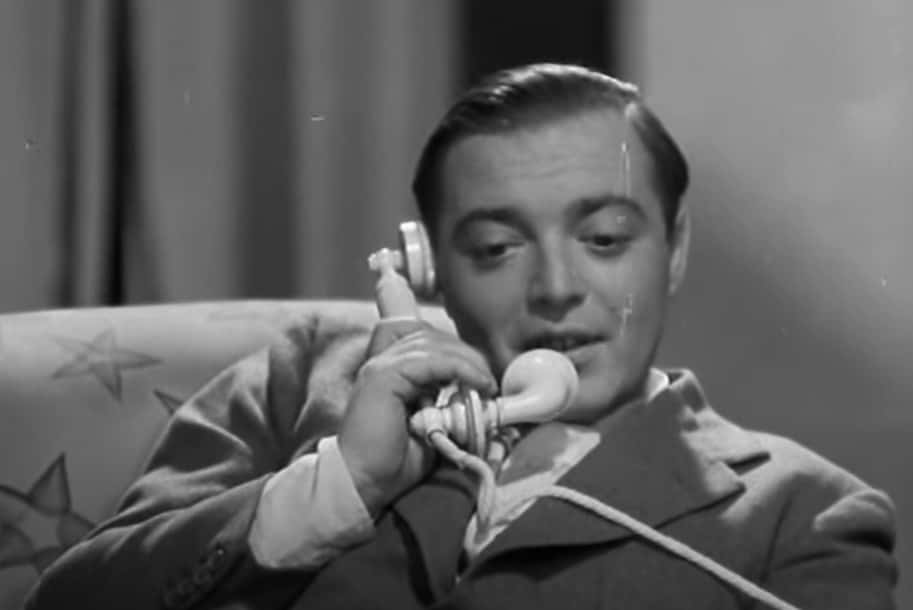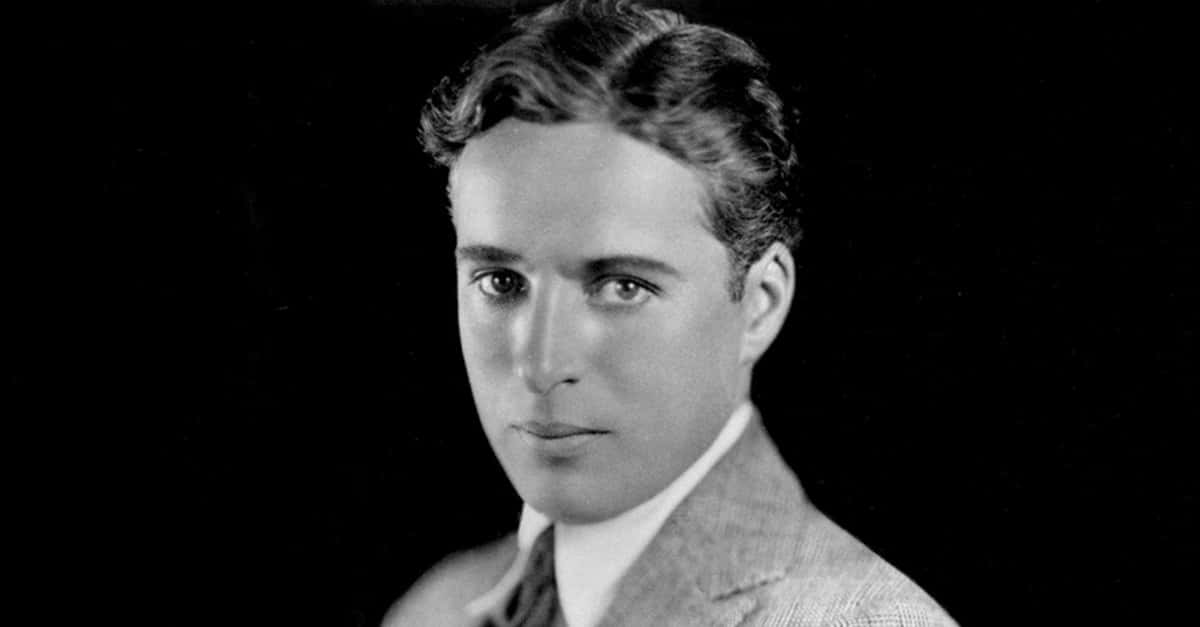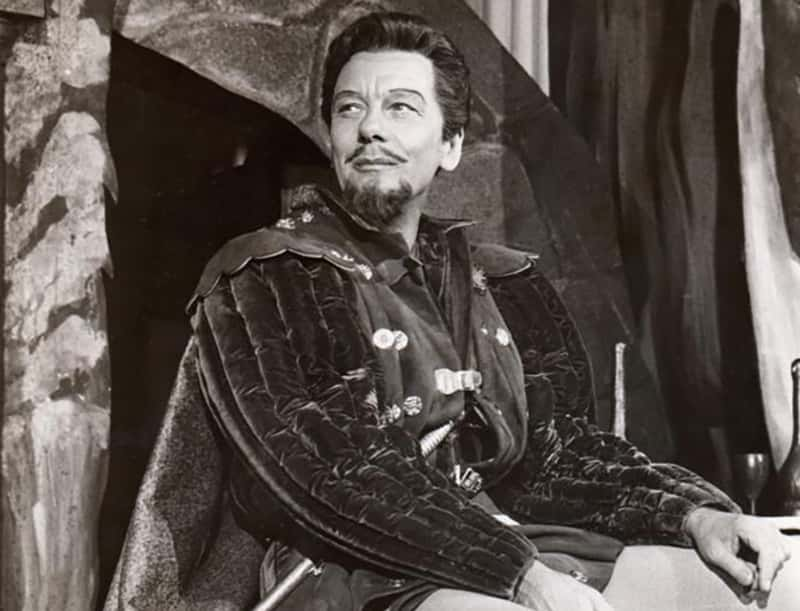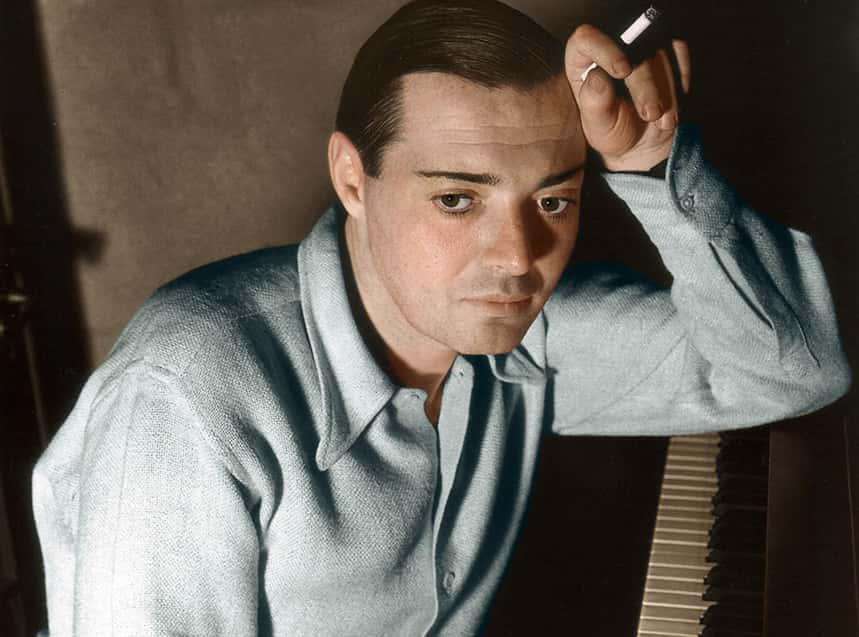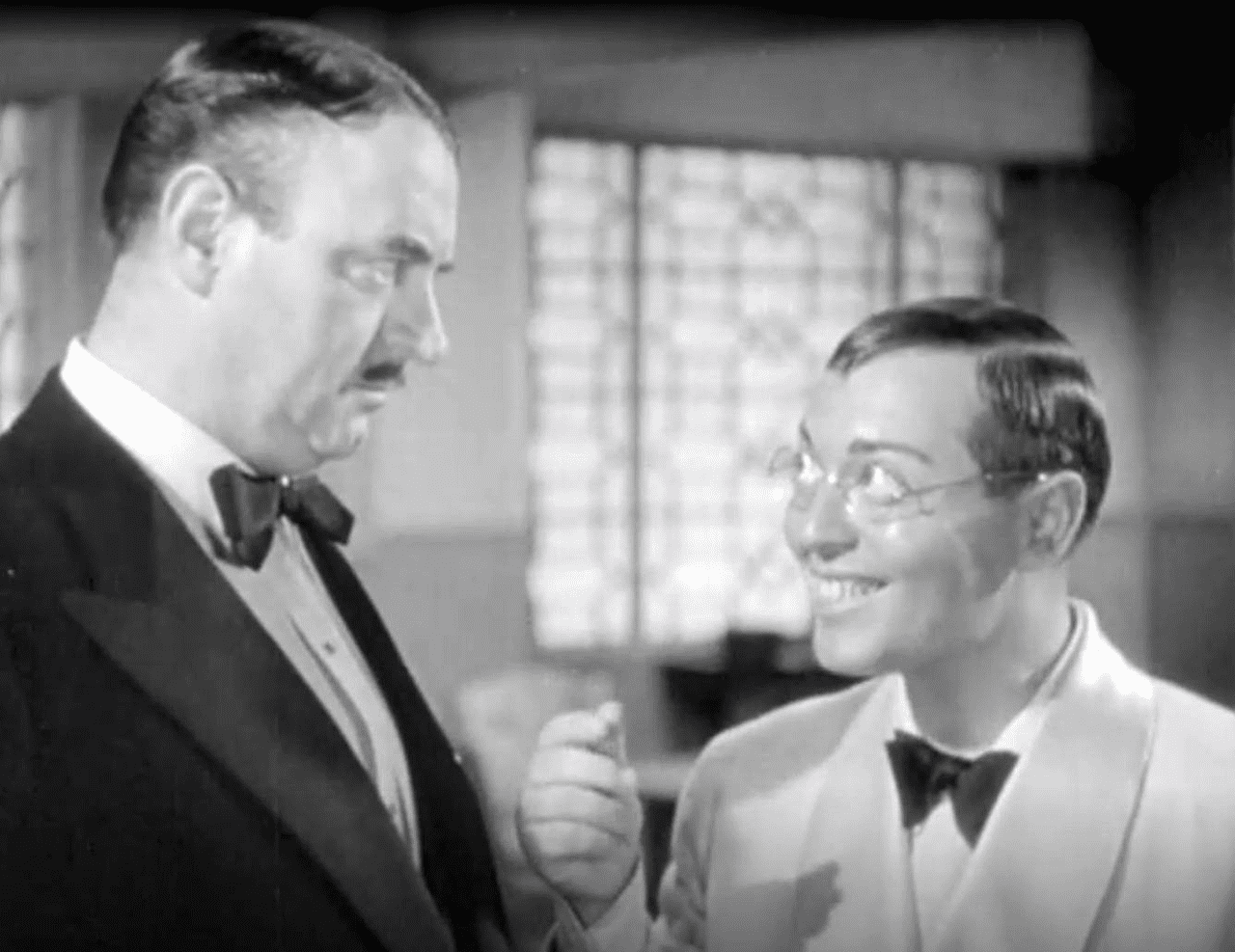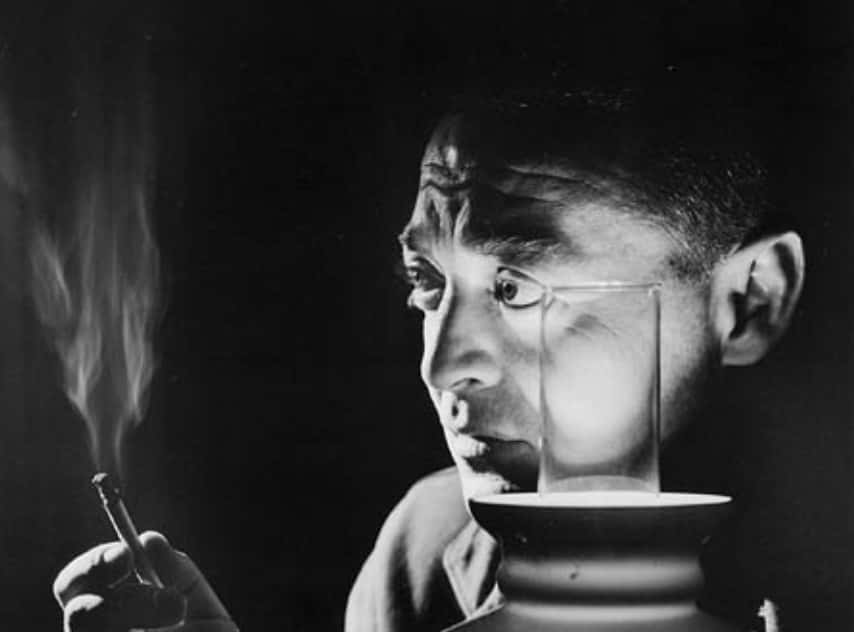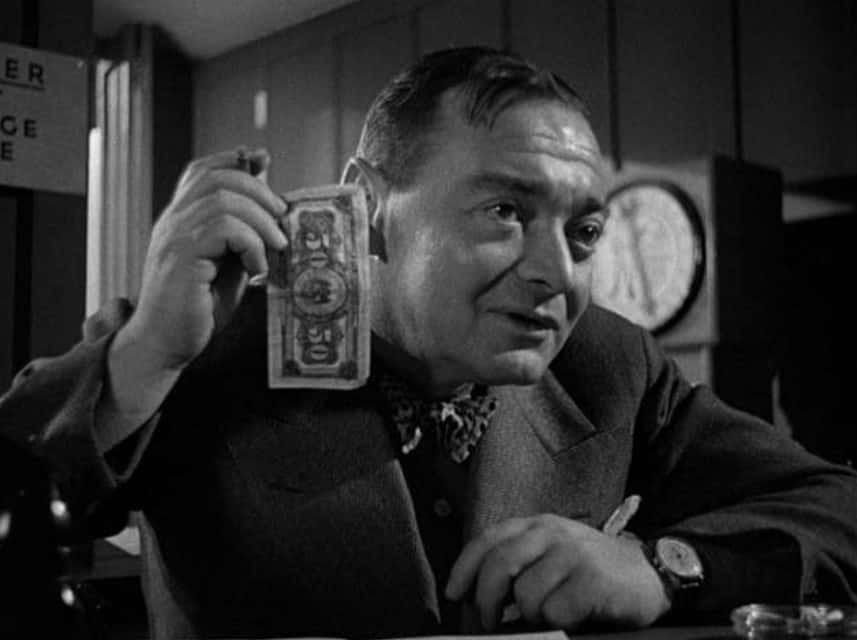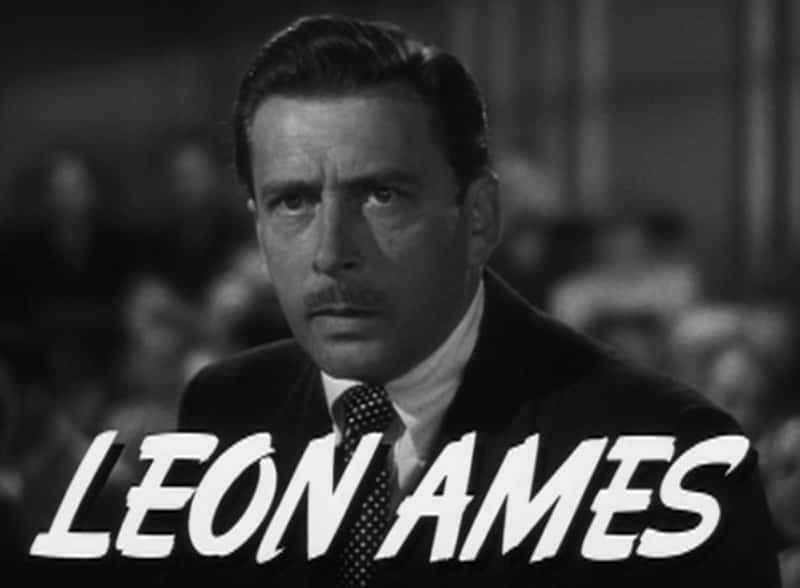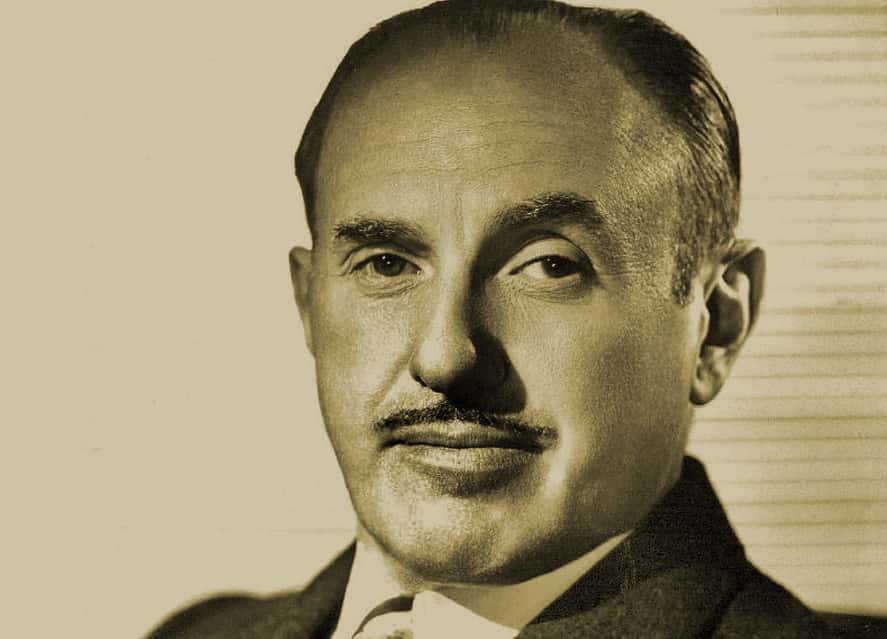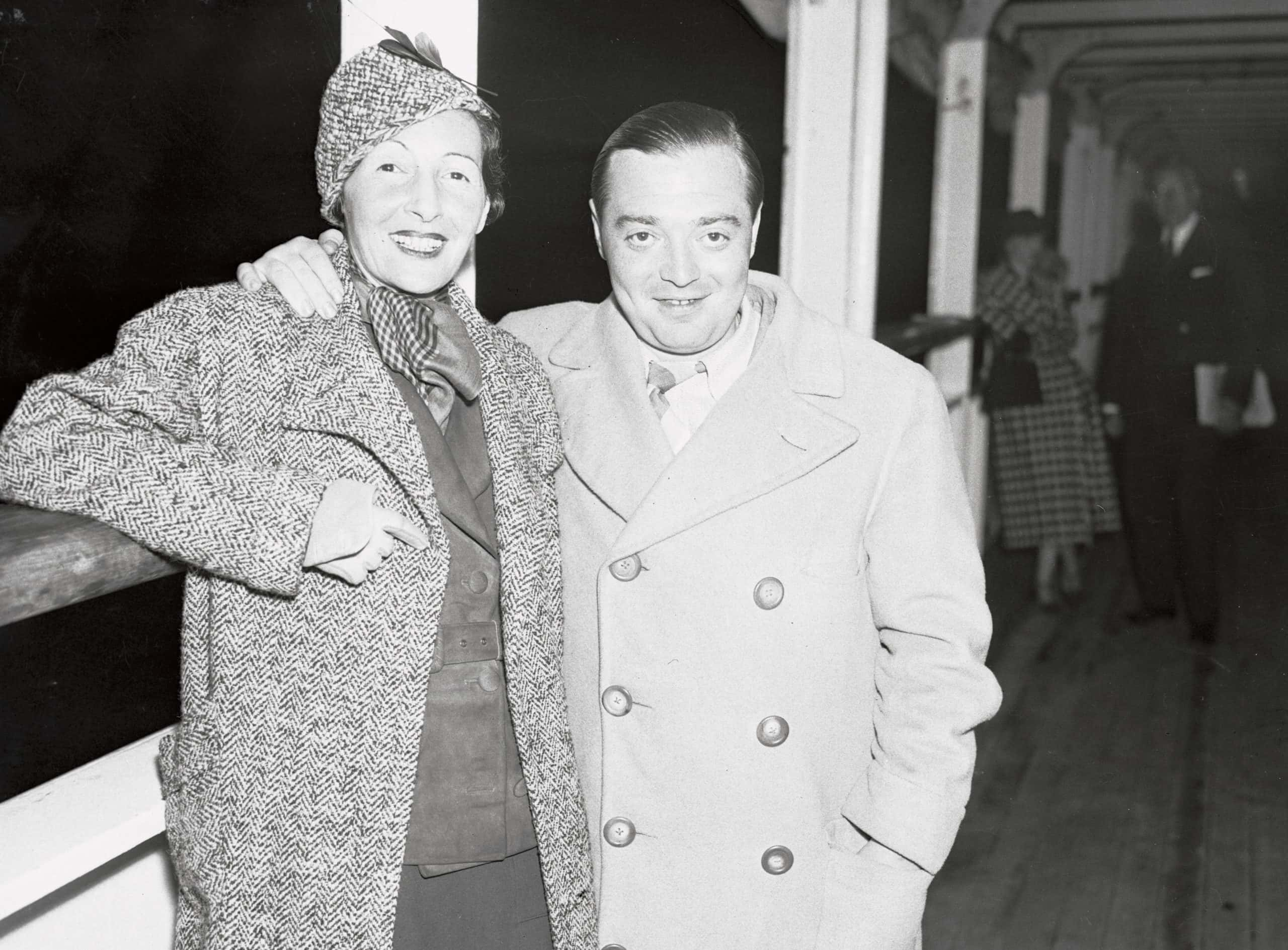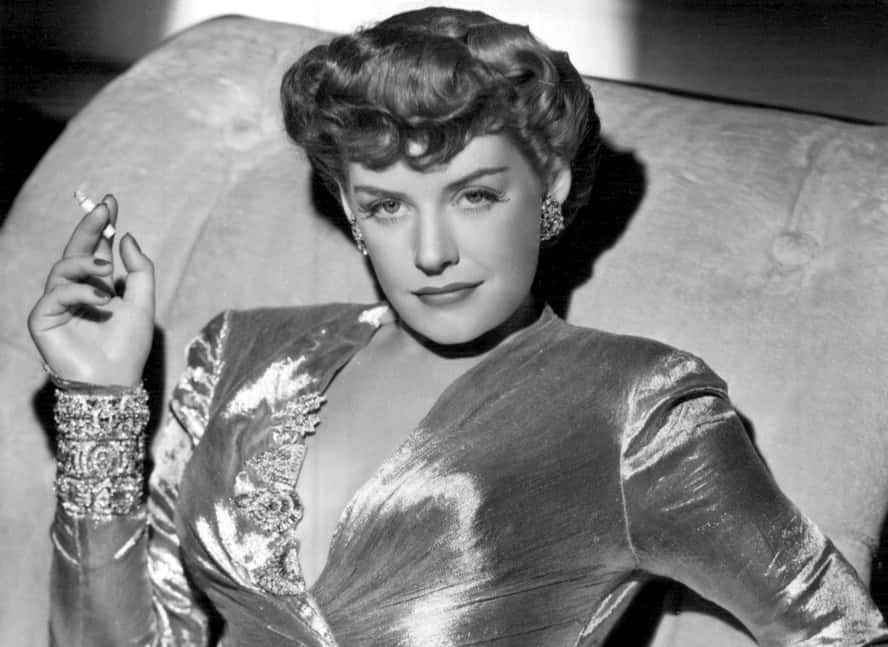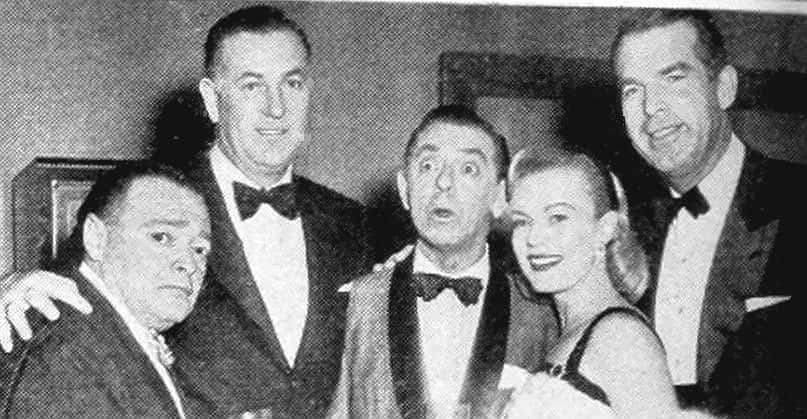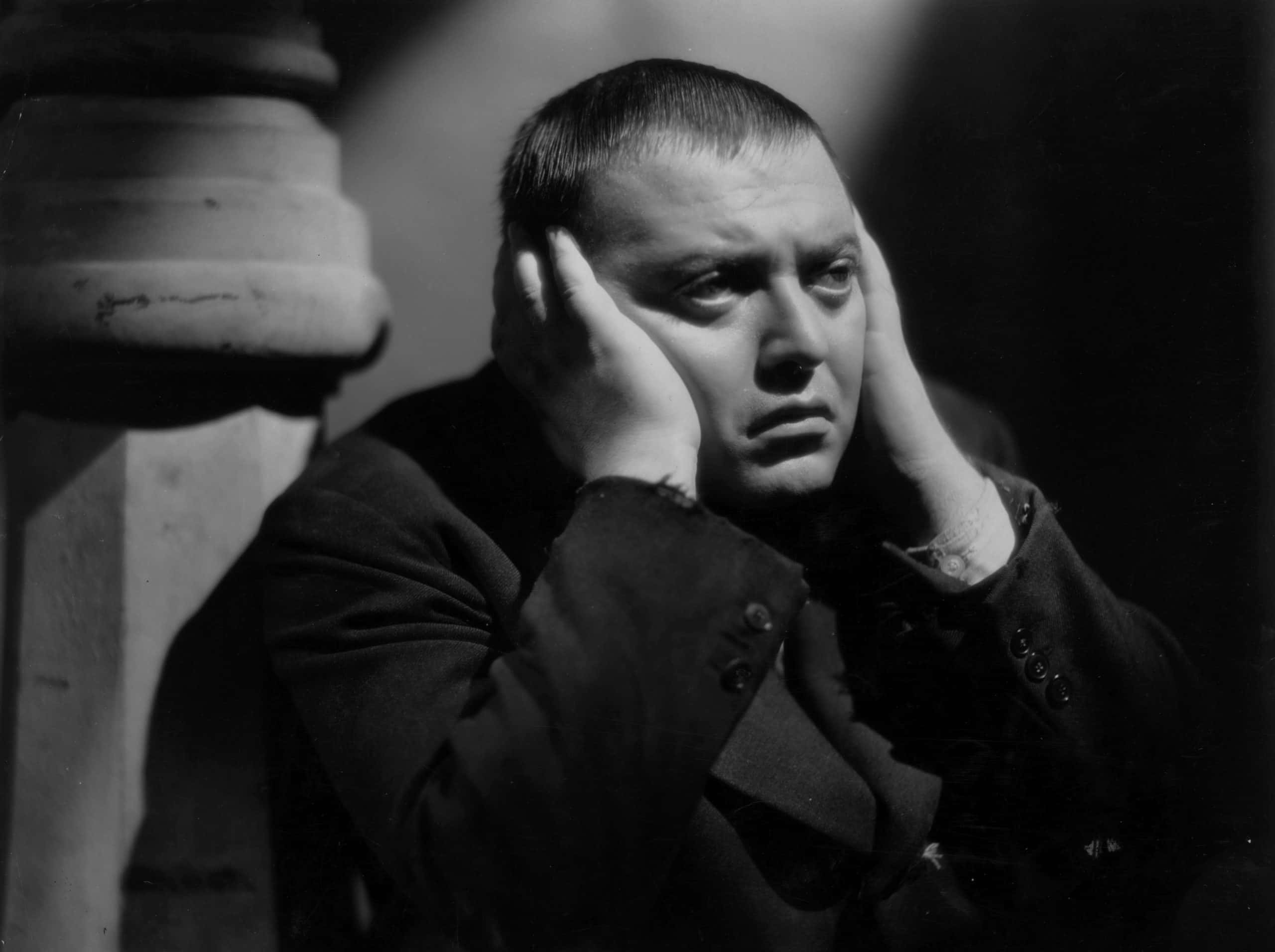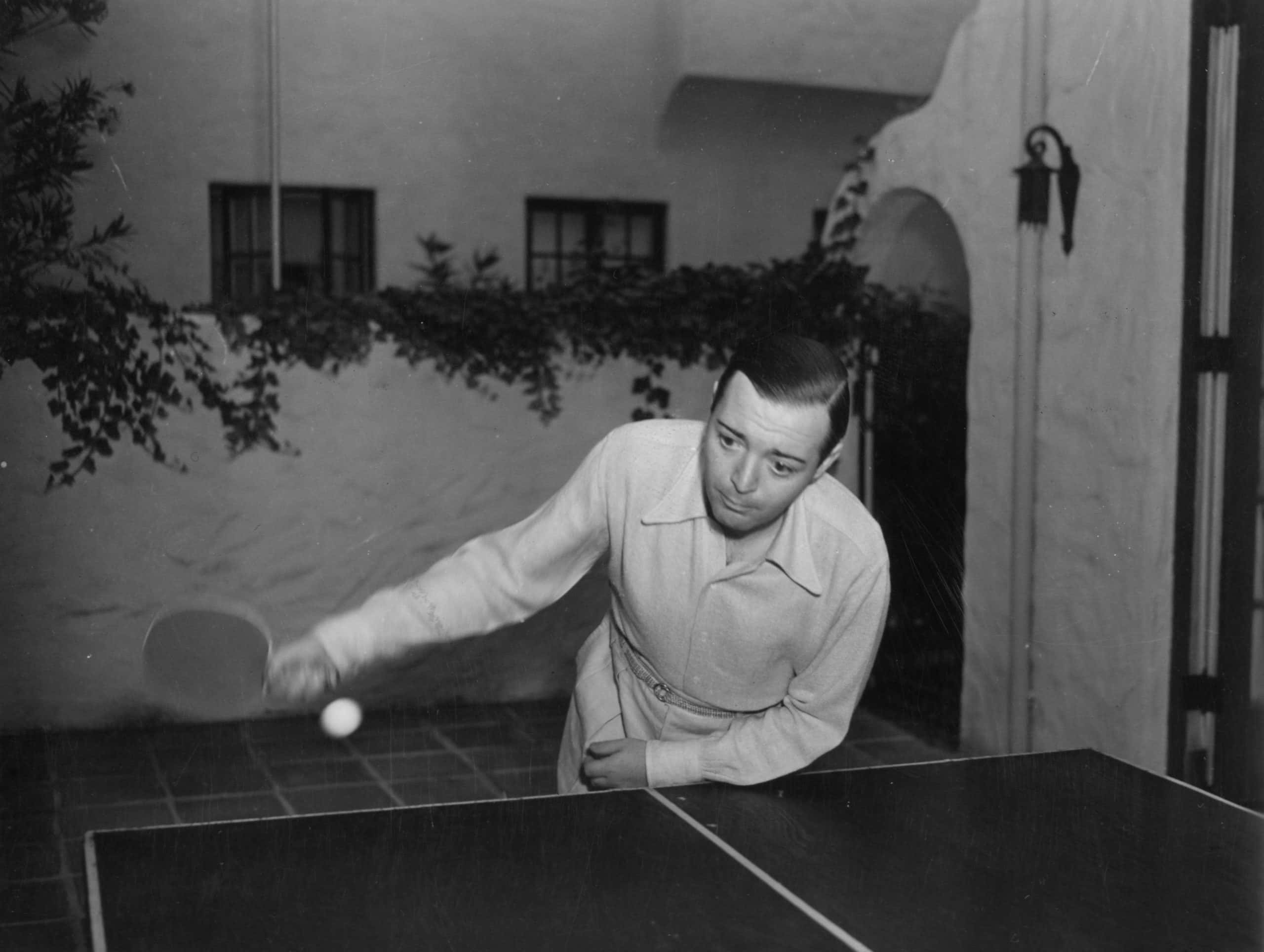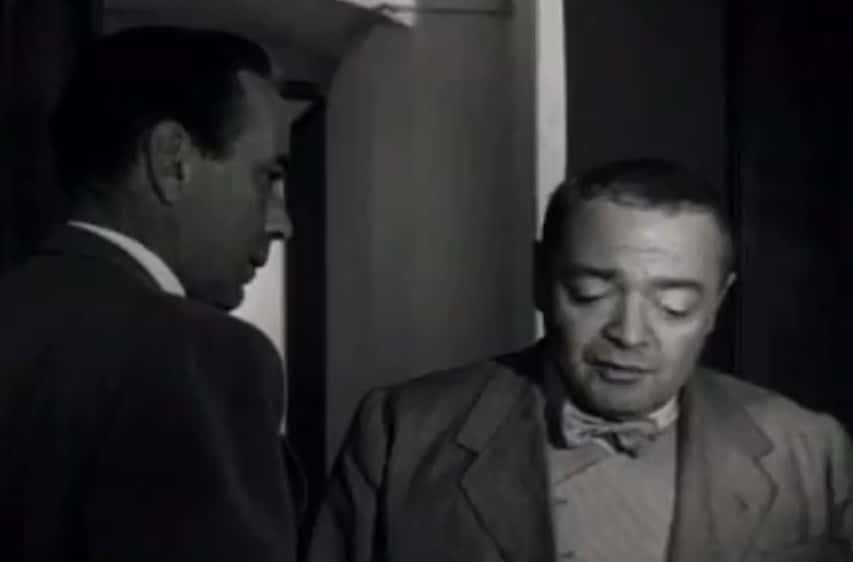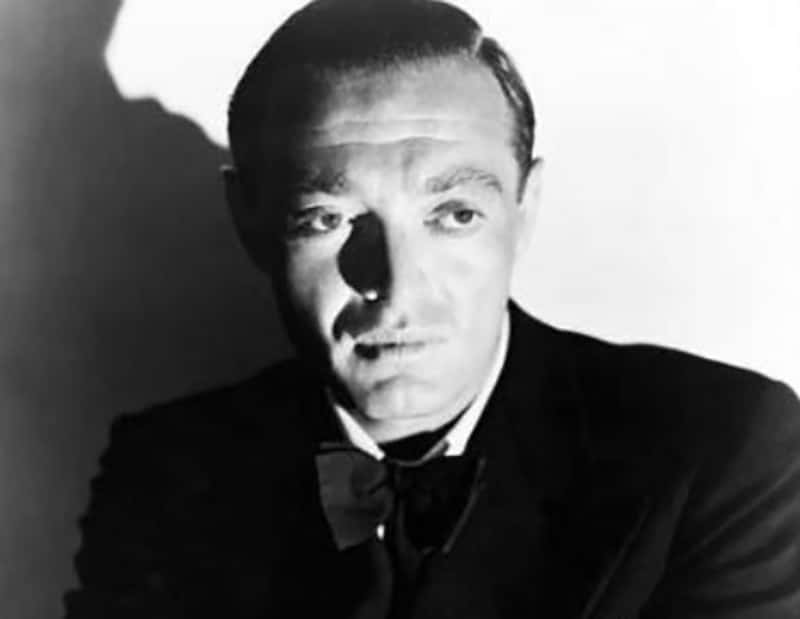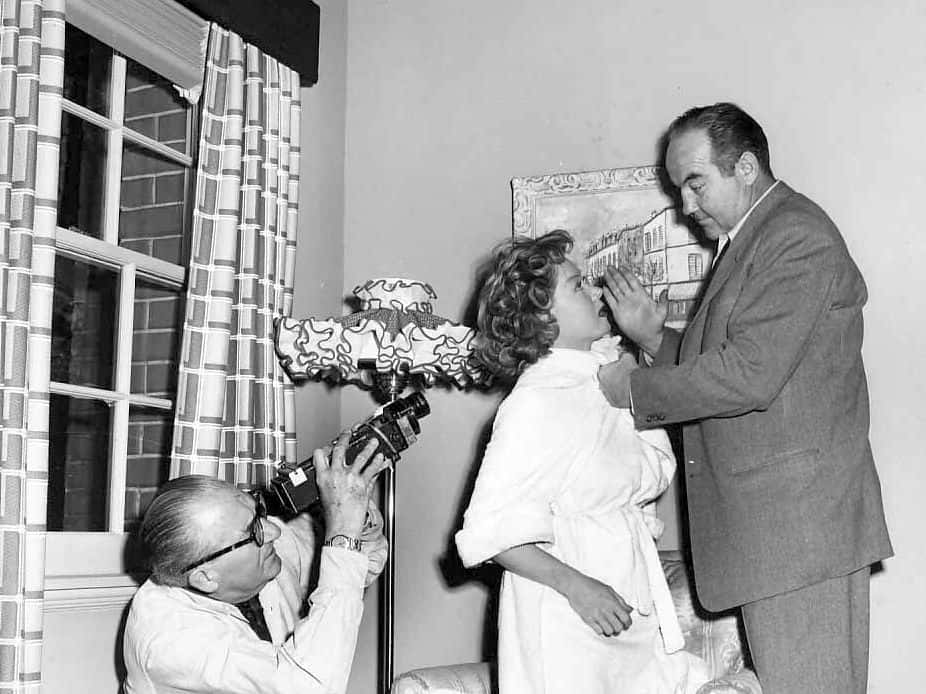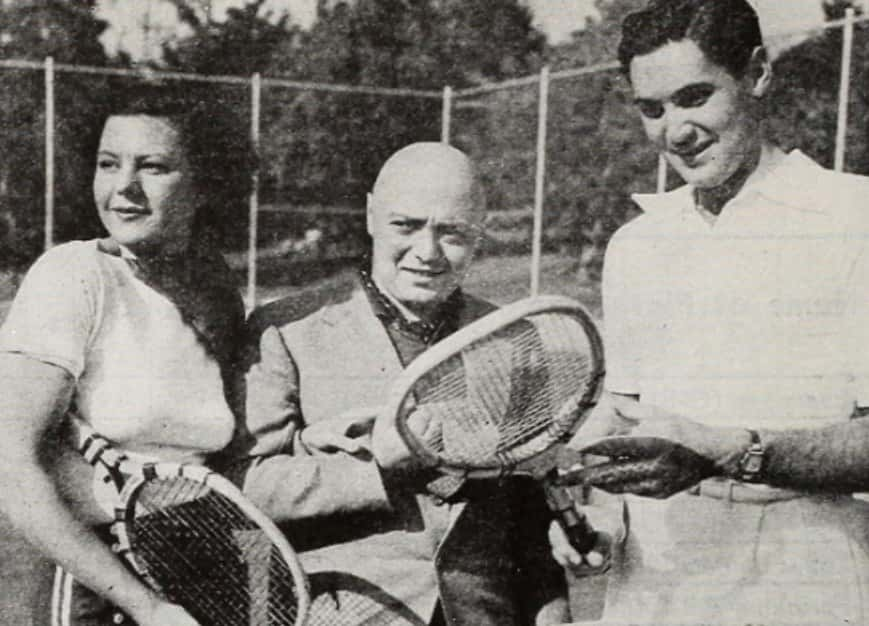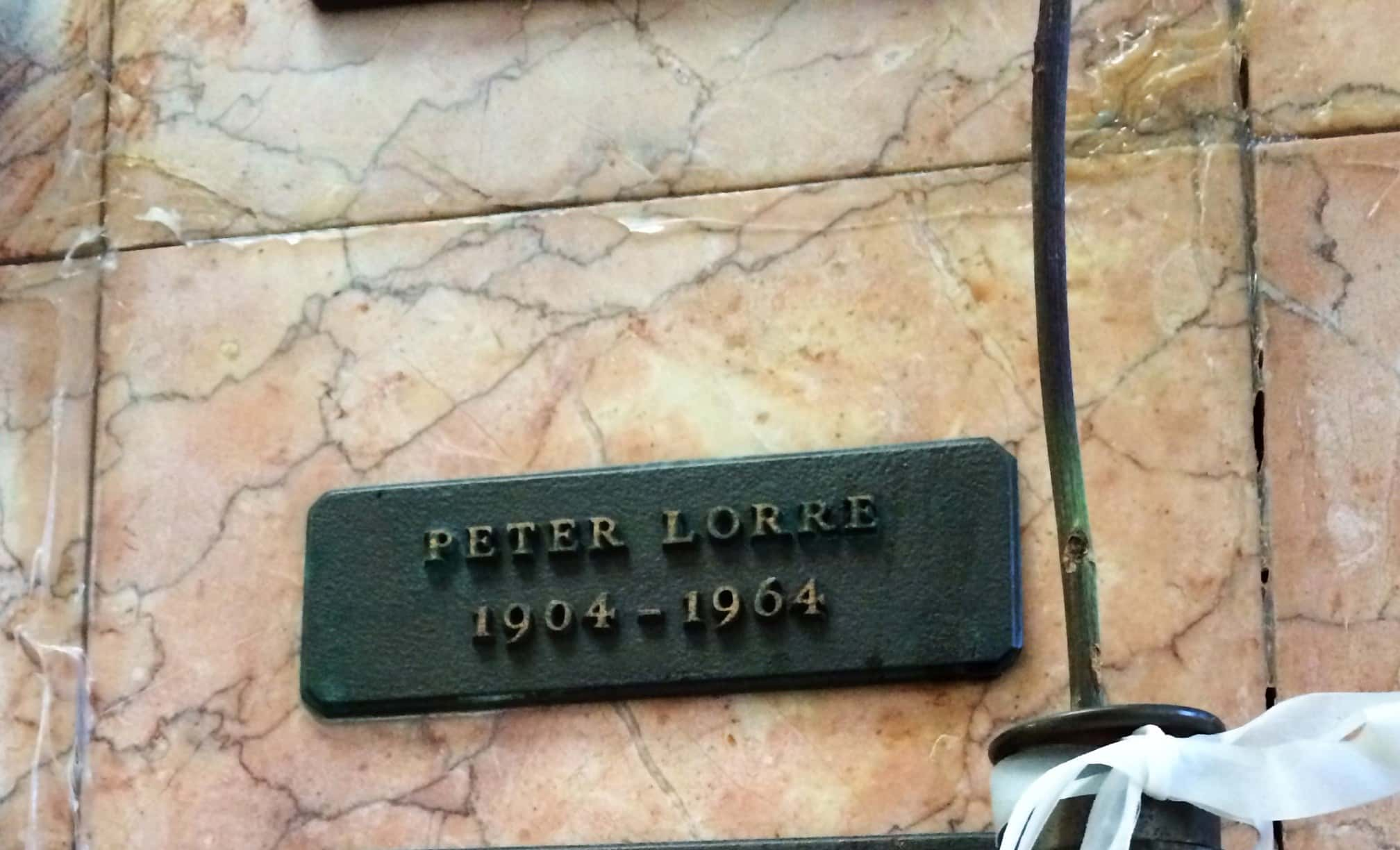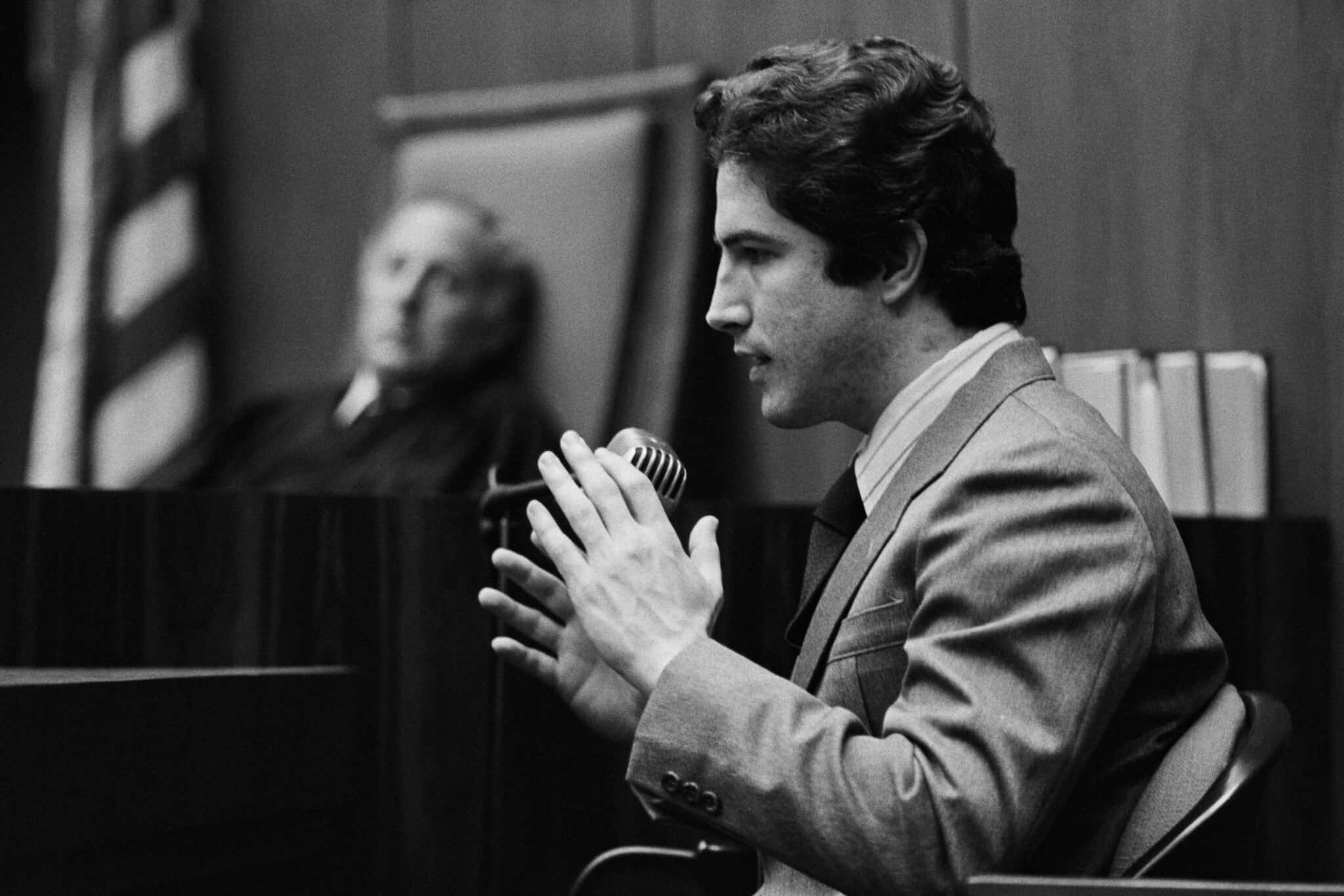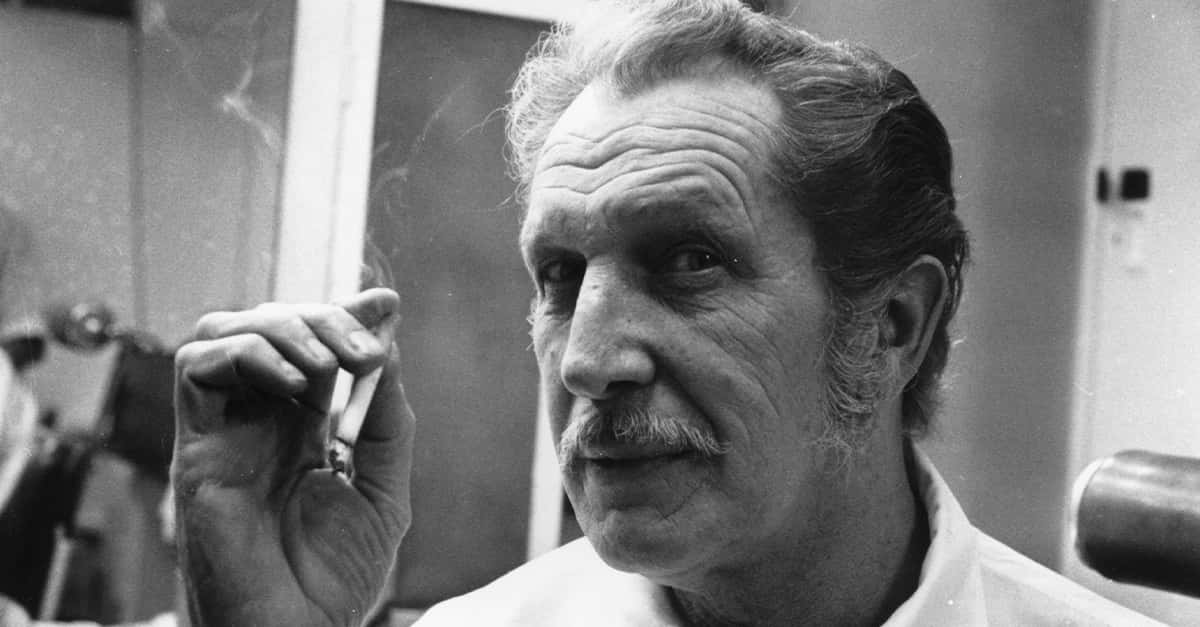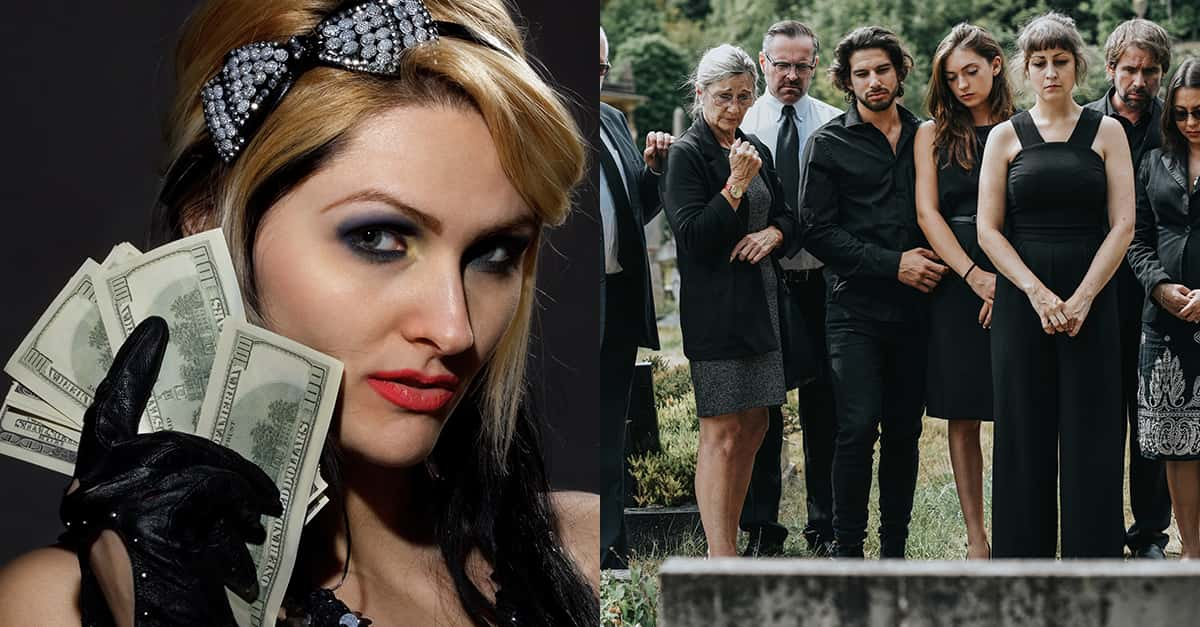Peter Lorre was Hollywood’s favorite bad guy. Famous for his menacing on-screen appearance, Lorre’s personal life took on nightmarish themes of its own. From an encounter with the infamous “Hillside Strangler” to a post-mortem stalker, read these facts about Peter Lorre, the original Bond villain.
1. He Was A Loner
Peter Lorre was born to Hungarian Jewish parents in June of 1904. His real name was László Löwenstein, which would have made for a much cooler stage name. His father was a bookkeeper but also a lieutenant, so he was rarely home. As a result, Lorre spent a lot of time alone. From the very beginning, his life was something of a nightmare.
2. He Grew Up With A Villain
It’s little wonder that Lorre knew how to portray a villain on screen—he grew up with one. Lorre’s mother passed away he was just four years old and his father remarried his deceased wife’s best friend. Lorre’s new stepmother was so cruel to him that he used to hide underneath the bed to escape her. And it wasn’t just because she was mean.
His fears might have been legitimate.
3. His Mother’s Passing Was Suspicious
By all accounts, Lorre’s mother had been healthy up to the point of her sudden demise and her quick end raised some eyebrows. In all likelihood, Lorre’s mother had succumbed to food poisoning. It’s only speculation, but her untimely passing benefited Lorre’s new monster of a stepmother more than anyone else. He had to escape.
4. He Ran Away
Peter Lorre ran away from home at the age of 17 to get away from his stepmother—in case she made him a suspect “family dinner”. Lorre found his way to Germany and began working as a bank clerk but took stage acting lessons as well. He soon found stage work in Vienna, Berlin and Zurich. But bigger, scarier things were right around the corner.
5. He Fell In Love
While working on the stage in Berlin, Lorre met fellow stage actress, Celia Lovsky. Despite his funny looks, it must have been love at first sight because the two began dating. Even though their romance wouldn’t last for very long, their friendship would. In fact, Lovsky might have been the only one who saw the hero in Lorre.
6. He Was To Make It Big
Lorre clearly had a knack for acting. Early in his stage acting career, Lorre attracted the attention of famed German director, Fritz Lang. Up to that point, Lorre had mostly featured in comedies on the stage—but Lang knew that there was something darker lurking beneath Lorre’s awkward face. Lorre was about to get famous for all the wrong reasons.
7. He Was A Vampire
Without a second thought, Lang cast Lorre as the villainous star of his 1931 German-language masterpiece, M. Lorre might not have agreed to the role, however, if he knew what he was getting himself into. Allegedly, Lang had drawn inspiration for Lorre’s character from the macabre actions of the real-life Vampire of Dusseldorf.
8. He Worked Overtime
There was no guarantee for Lorre that Lang’s experimental film, M, would earn him any money. So, to pay his bills, Lorre continued working on the stage during the filming of M. During the days, he played a deranged mind and then by nights he graced the stage and made audiences laugh. Filming was harder work than Lorre had initially anticipated.
9. He Did His Own Stunts
Lang praised Lorre’s performance throughout the making of M, but from the sounds of it, there wasn’t much acting involved. There was a scene in which Lorre’s character had to fall down the stairs. In the age before stuntmen, this meant that Lang directed Lorre to throw himself down a flight of stairs. It only took twelve takes.

History's most fascinating stories and darkest secrets, delivered to your inbox daily.
10. He Couldn’t Whistle
Lang couldn’t get Lorre to do all of his own stunts on the set of M. Lang wanted Lorre’s character to have a menacing whistle to the tune of “In the Hall of the Mountain King,” but there was just one issue. Lorre could throw himself down the stairs but he couldn’t whistle. Lang actually recorded himself whistling and Lorre just had to mouth the tune.
11. His Success Haunted Him
Despite their difficulties during filming, Lorre and Lang released the controversial film. Despite—or because of—the fact that M told the story of a diabolical and macabre mind, it was a massive success. Critics and audiences praised the film and producers dubbed it in English for American audiences. Everyone was happy—except for Lorre.
12. His Reputation Preceded Him
Later on in his career, Lorre learned to hate his role in M. The film’s success and enduring legacy meant that fans everywhere associated Lorre with the sinister child predator he had portrayed on screen. Apparently, that was the thanks he received for throwing himself down the stairs…twelve times. It wasn’t the only role he would later regret taking.
13. He Fled The Rise Of The Reich
In 1933, Lorre made the difficult decision to flee from Germany. But his decision had nothing to do with his reputation as an on-screen psycho. Lorre felt that he had to escape a bunch of real-life villains, i.e., The Third Reich. He eventually arrived safely in London with his girlfriend, Celia Lovsky. He had no idea that he was about to become a superstar.
14. He Had A Chance Encounter
While in London, Lorre had a chance meeting with an associate of Alfred Hitchcock. It just so happened that Hitchcock was trying to cast a sinister mastermind for his upcoming film, The Man Who Knew Too Much. Hitchcock had seen Lorre M and knew that the up-and-coming star could portray evil better than anyone.
Hitchcock just wanted to meet Lorre to be sure.
15. He Just Smiled And Nodded Along
Lorre and Hitchcock met in London to talk about Hitchcock’s upcoming film. Well, Hitchcock spoke and Lorre mostly just nodded along and smiled. But he had a good reason for his silence. Lorre barely spoke a word of English. By nodding along and laughing a lot, Lorre was able to cover up the fact that he had no idea what Hitchcock was saying.
16. He Had To Spell It Out
All of that fake laughing worked on Hitchcock. He cast Lorre as the lead villain—another diabolical mind—in The Man in Who Knew Too Much. In order to get over the language barrier, Lorre simply learned his lines phonetically. He probably had no idea what his character was actually saying half the time. That was okay, as most of his lines read “diabolical laughter”.
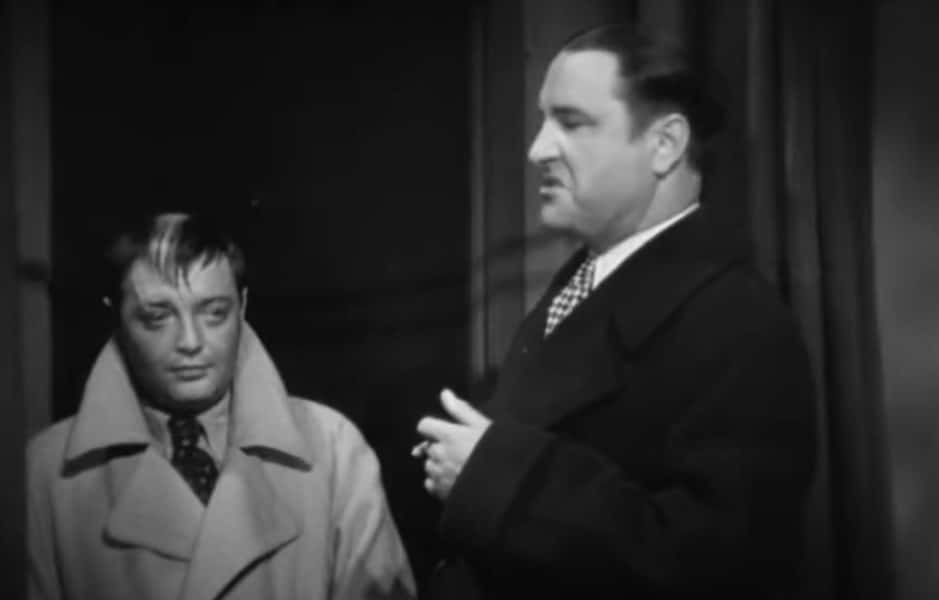 The Man Who Knew Too Much (1934), Gaumont British Picture Corporation
The Man Who Knew Too Much (1934), Gaumont British Picture Corporation
17. He Left London In A Hurry
Despite being “safe” in London, Peter Lorre was still looking over his shoulder—or, over the English Channel—at the Third Reich. He had managed to escape his stepmother, but the evils of the Reich were something else entirely. The day after filming wrapped on the set of The Man Who Knew Too Much, Lorre married Celia Lovsky and boarded a boat for New York.
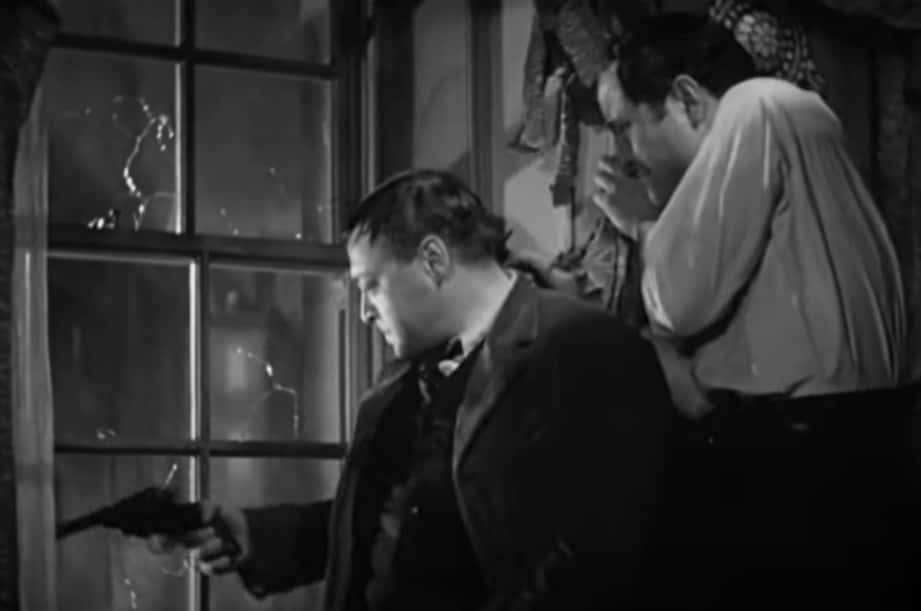 The Man Who Knew Too Much (1934), Gaumont British Picture Corporation
The Man Who Knew Too Much (1934), Gaumont British Picture Corporation
18. He Was Madly In Love
Lorre and Lovsky made their way to Los Angeles and settled down. Lorre insisted that Lovsky stay at home so that he could be the primary breadwinner. But work was, at first, hard to find. Eventually, Lorre found himself once again playing the bad guy in two films: Mad Love and Crime and Punishment. Turns out, American audiences loved to hate him.
19. He Was Good At Being Bad
Lorre’s Hollywood start was slow but once he got his break, he made audiences love him. After seeing Lorre in Mad Love, the legendary Charlie Chaplin said that Lorre was the “screen’s best actor”. That’s basically the same thing as the Queen of England calling you the most royal person on earth. Who knew that being so bad could be so good?
20. He Didn’t Get Along With His Co-Stars
In 1936, Lorre returned to London to work with Hitchcock once again. He acted alongside fellow star John Gielgud—but it wasn’t a happy welcome. Apparently, Lorre and Gielgud didn’t get along. It might have had something to do with the fact that Lorre upstaged Gielgud, despite being the supporting character.
Despite his affable exterior, Lorre had a way of making real-life enemies.
21. He Was Hiding Something
John Gielgud didn’t like Peter Lorre for stealing his spotlight but there might have been another reason that the two fought like cats and dogs behind the scenes. There was speculation at the time that Lorre was hiding a dark and devastating secret. People said that he had become addicted to substances—specifically morphine.
The story goes that Lorre was suffering from withdrawal while on set.
22. He Became Mr. Moto
Returning to Hollywood with another Hitchcock film on his resume, Lorre landed a major contract with 20th Century Fox. The deal saw Lorre step into the iconic Mr. Moto character—a Japanese spy and detective. In just the two years between 1937 and 1939, Lorre reprised the role of Mr. Moto in eight motion pictures. It wasn’t all smooth sailing though.
23. He Had To Go To Rehab
Lorre had initially been reluctant to take on the role of Mr. Moto, but he couldn’t exactly turn the role down. His problems had finally caught up with him. Those rumors about substance use turned out to be true. Lorre had been taking morphine to treat a chronic pain issue and had become addicted. When Lorre returned from London, he had checked himself into an expensive rehab facility—and Mr. Moto paid the bills.
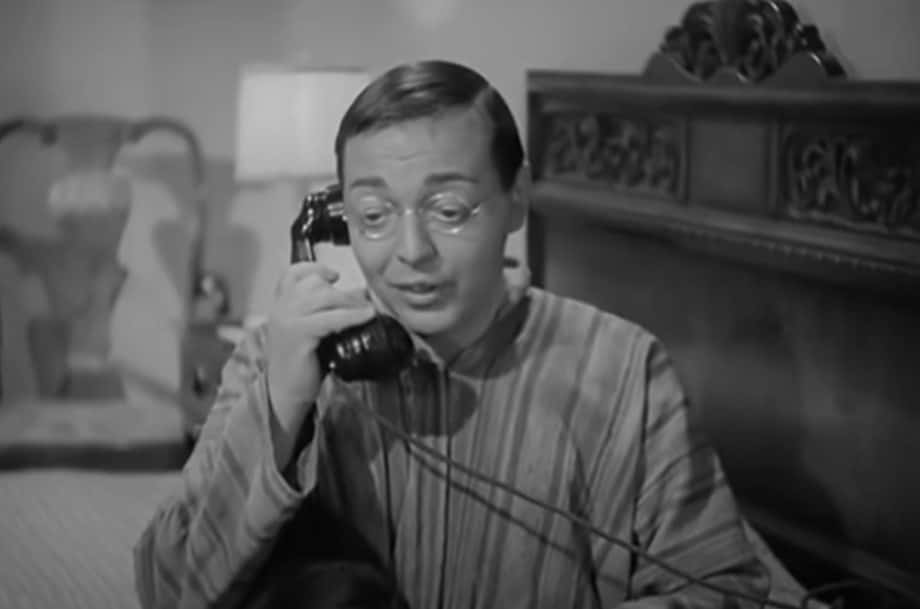 Think Fast, Mr. Moto (1937), Twentieth Century Fox
Think Fast, Mr. Moto (1937), Twentieth Century Fox
24. He Had A Chip On His Shoulder
Perhaps because he was high on morphine and couldn’t feel anything, Peter Lorre had developed a habit of doing his own stunts. Just as he had thrown himself down the stairs for Lang in M, Lorre took on some serious risks for his final Mr. Moto film, Mr. Moto Takes a Vacation in 1939. But for Lorre, this was the final straw.
After injuring his shoulder, he swore off the role that had made him the big bucks forever.
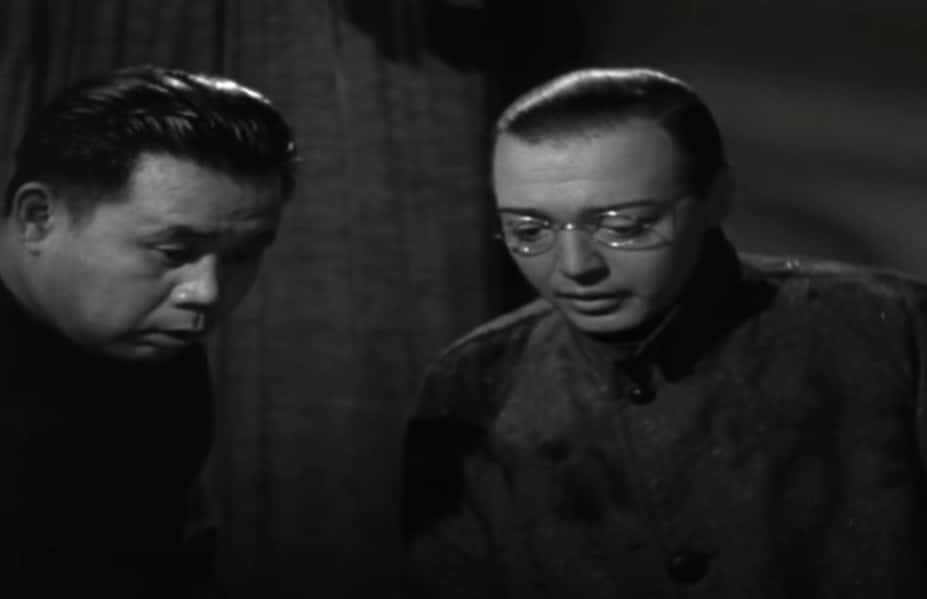 Mr. Moto Takes a Vacation (1939),Twentieth Century Fox
Mr. Moto Takes a Vacation (1939),Twentieth Century Fox
25. He Fired Mr. Moto
Peter Lorre was happy for the work and happy that he wasn’t, for once, playing the sinister foreigner in a film. But he had never wanted the role of Mr. Moto and very quickly tired of the detective/spy character, calling it “childish”. Later on in his career, Lorre would angrily dismiss any mention of the role in his presence.
26. He Spoke His Mind
Lorre wasn’t shy about his dislike for the Mr. Moto character, even though it had turned him into an international star. Nor was he shy about letting people know just how much he disliked the character. Visiting Japanese officials asked for lunch with Lorre, he reacted with a brutal insult. Lorre showed up wearing a badge that read, “Boycott Japanese Goods”. Yikes.
27. He Had Halitosis
Around the time of his Mr. Moto films, Lorre was still struggling with health issues. And it looked like he may have taken a turn for the worse. One of his Mr. Moto co-stars, Leon Ames, claimed that while on set, Lorre’s teeth had been in “very bad shape” which resulted in Lorre having “very bad breath”. Believe it or not, those were the good days.
28. He Hit A Low Point
After the Mr. Moto role, Lorre had difficulty finding work. He had several offers for menacing, villainous, or outright murderous roles but he turned them down. This downturn in Lorre’s career hit a low in 1940 with Mr. District Attorney which The New York Times dubbed, “the worst bad picture of the year”. The only way to go was up.
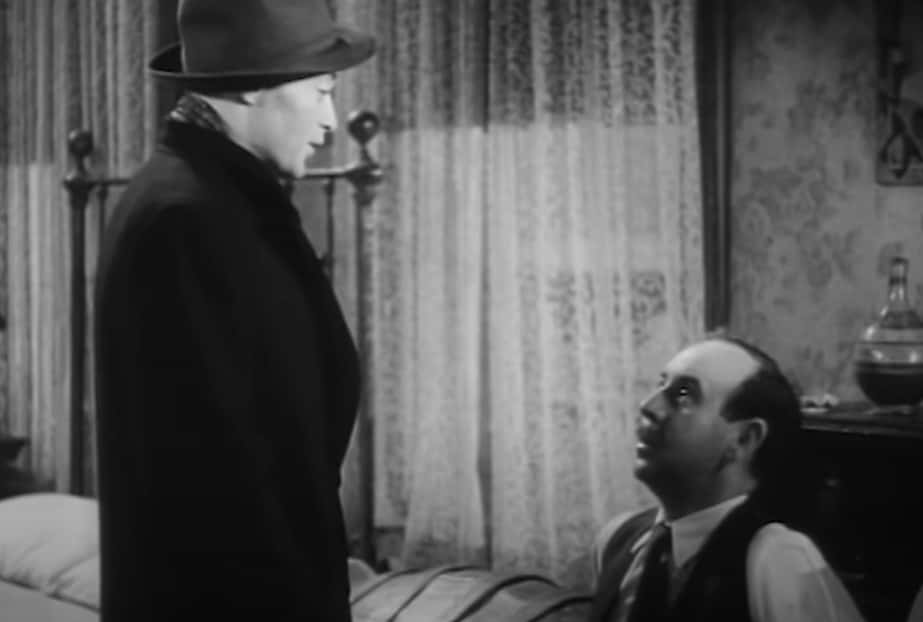 Mr. District Attorney (1941), Republic Pictures
Mr. District Attorney (1941), Republic Pictures
29. He Drank Like A Fish
Peter Lorre returned to form the following year in 1941’s The Maltese Falcon. On set, he became close friends and frequent co-workers with Humphrey Bogart, Sydney Greenstreet, and director John Huston. Apparently, Bogart liked Lorre because he “wasn’t boring” and could “drink like [a] fish”. Of course, he wasn’t talking about water.
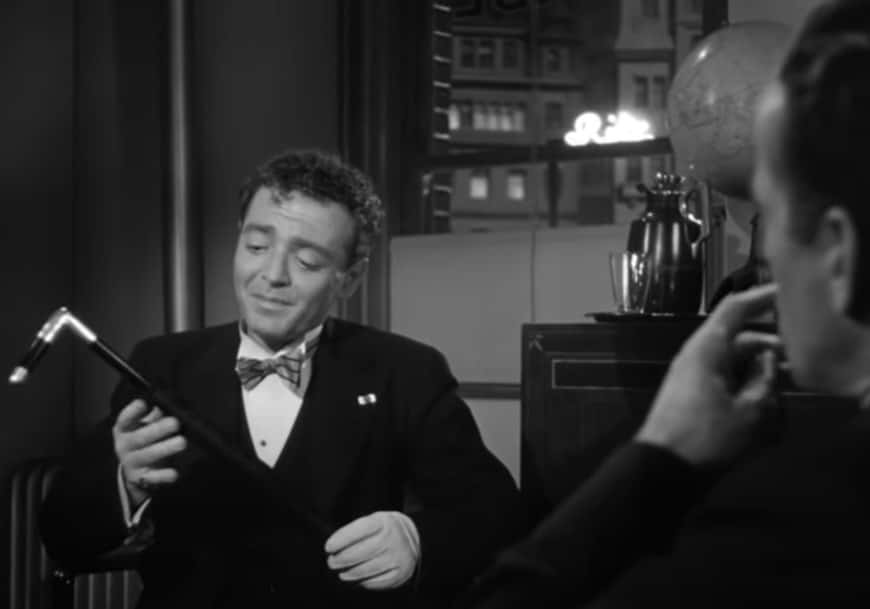 The Maltese Falcon (1941), Warner Bros.
The Maltese Falcon (1941), Warner Bros.
30. He Loved The Maltese Falcon
Lorre looked back on so many of his roles with either regret or disgust. But whereas he couldn’t stand his Mr. Moto films and didn’t like fans associating him with the Vampire of Dusseldorf, Lorre did have some fond memories. He recalled The Maltese Falcon as his personal favorite of all the movies he starred in. Though he didn’t “star” in many.
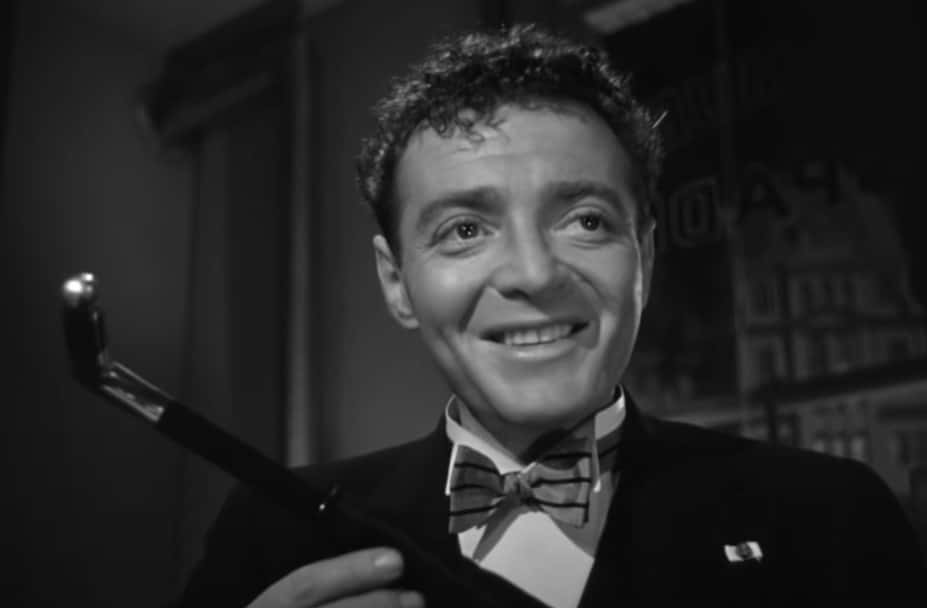 The Maltese Falcon (1941), Warner Bros.
The Maltese Falcon (1941), Warner Bros.
31. His Boss Hated Him
Despite his stellar career and starring roles, Lorre rarely, if ever, received top billing in his films with Warner Brothers. As far as Lorre was concerned, the reason for his low billing had nothing to do with his star power. He was convinced that something more sinister was afoot. He believed that it was because Jack L. Warner, the head of the studio, disliked him.
Who was the real villain?
32. He Was A Prankster
Despite his usually horrifying characters on screen, Lorre was actually a fun-loving person off-screen. He enjoyed playing pranks on his friends and co-workers. On the set of The Maltese Falcon, he and Bogart played a prank on Jack L. Warner—and it might have contributed to Warner’s dislike for Lorre. You could say that it went up in smoke.
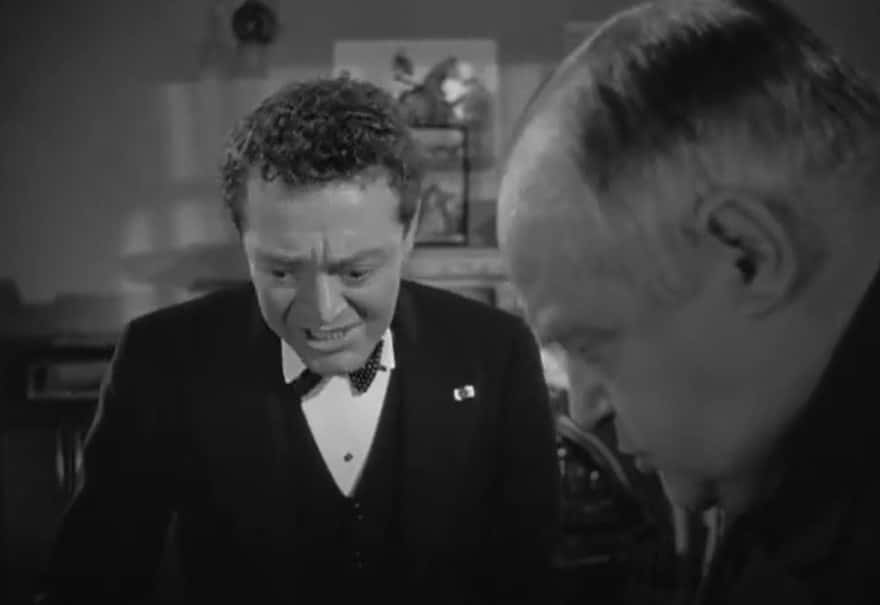 The Maltese Falcon (1941), Warner Bros.
The Maltese Falcon (1941), Warner Bros.
33. He Blew Smoke
Lorre knew that Warner didn’t like to see his actors on screen lighting up. So, as a joke, Lorre convinced all of his Maltese Falcon co-stars to turn the climactic scene of the film into a smoke-filled mess. When Warner saw the scene, he was irate and made them film it over again—at great expense to his studio.
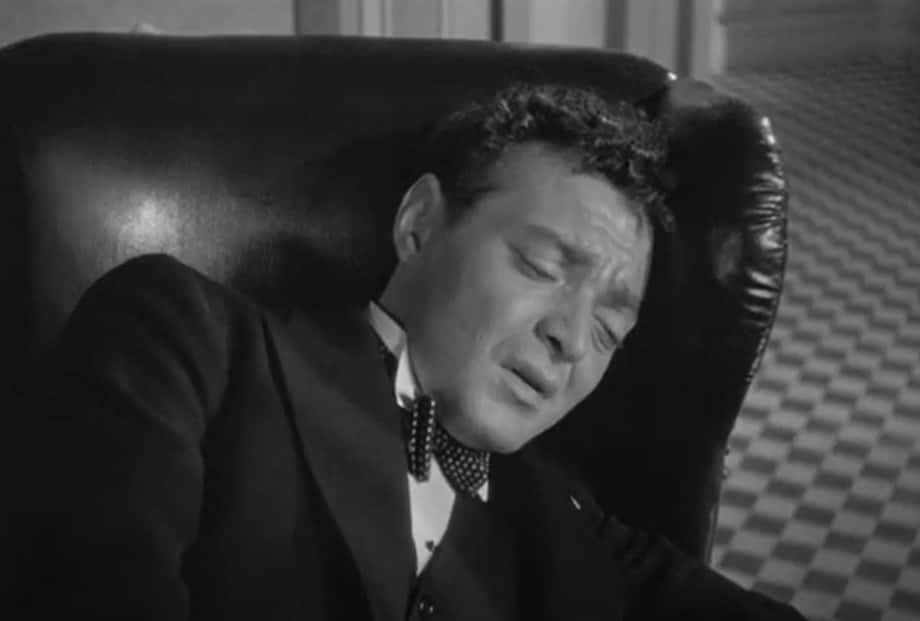 The Maltese Falcon (1941), Warner Bros.
The Maltese Falcon (1941), Warner Bros.
34. His Marriage Fell Apart
Despite the success in his career, Lorre’s home life was in shambles. He and Lovsky managed to keep the details of their marriage out of the tabloids, but they divorced in 1945. Somehow, they still remained friendly and Lovsky worked as Lorre’s “publicist, manager, secretary, financial planner, nurse, and confidante” for the rest of his career.
35. He May Have Had An Affair
Even though there weren’t any splashy tabloid headlines about what happened in Lorre’s and Lovksy’s bedchambers, anyone who read between the lines could take a guess. Lorre had been hanging out with noted ladies’ man, Humphrey Bogart and not long after his divorce, he married German-born actress Kaaren Verne. Did someone say, “affair”?
36. He Was Funny…Looking
Lorre clearly didn’t have any problems landing the ladies but landing a romantic lead in a film was another story. He had developed a reputation as an evil character actor and, to top it off, he was funny-looking. According to one screenwriter who didn’t want to cast Lorre, the audience would take one look at him and think he was crazy.
37. He Had A Face For Radio
Lorre’s divorce from Lovsky and marriage to Verne marked a turn in his career—and his fortunes. Stuck in the “bad guy” role and unable to land the role he wanted, Lorre left screen acting and turned to radio, so no one could judge his looks. He mustn’t have been very good at radio though, because in 1949 he filed for bankruptcy and he and Verne divorced.
38. He Went Back To His Roots
When his film and radio career stalled in Hollywood, Lorre looked back across the Atlantic. With the Third Reich defeated, he had nothing to fear and returned to Germany. He tried his hand behind the camera with the 1951 German-language film The Lost One. Critics loved the film, but audiences stateside missed Lorre’s strange face.
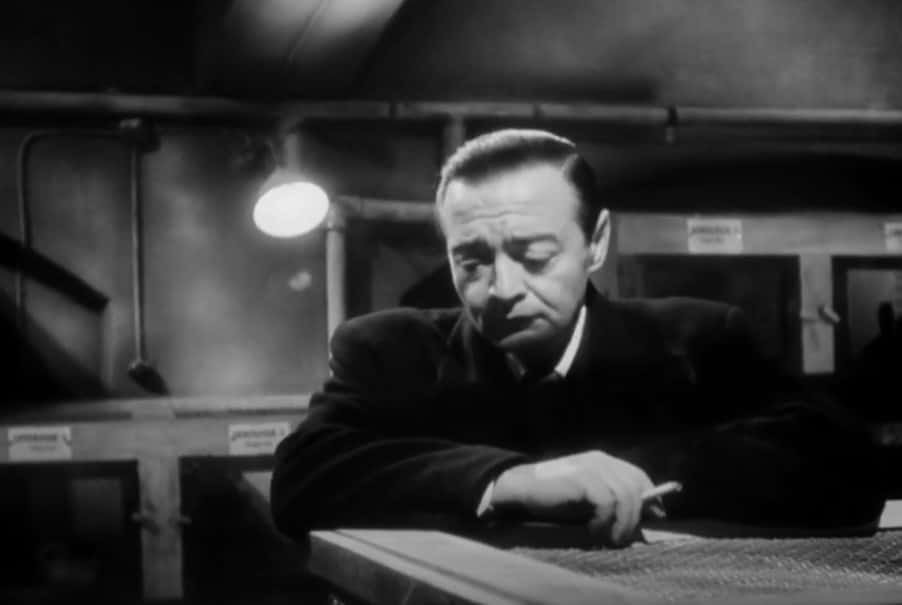 The Lost Man (1951), Arnold Pressburger Filmproduktion
The Lost Man (1951), Arnold Pressburger Filmproduktion
39. He Made His Comeback
Lorre returned to the US the following year with a new perspective. Even though he still wanted to move on from his nightmarish films and ghoulish characters, he had accepted that audiences loved him as the bad guy. Little did Lorre know that embracing his bad side would be so good for his career—if a little dangerous.
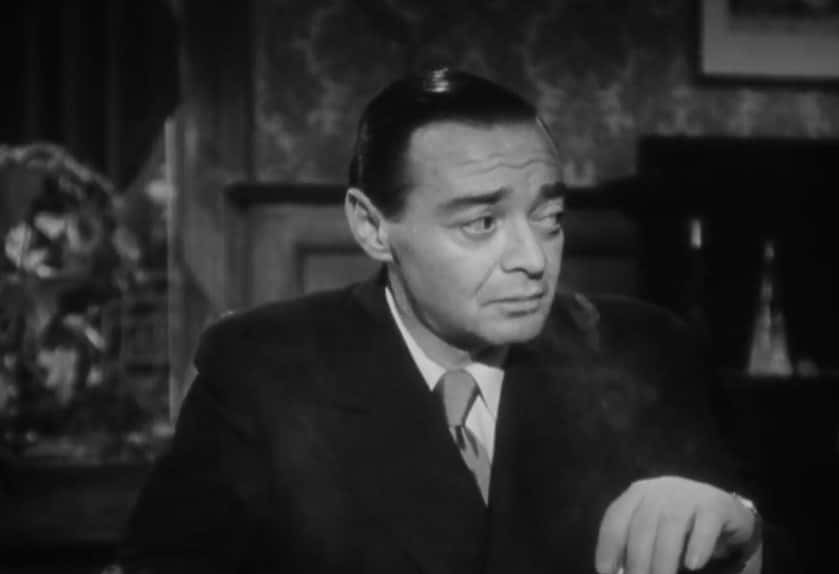 The Lost Man (1951), Arnold Pressburger Filmproduktion
The Lost Man (1951), Arnold Pressburger Filmproduktion
40. He Was the Original Bond Baddy
Heath Ledger’s Joker and Anthony Hopkins’ Hannibal Lecter stole the spotlight in their films. But, when it comes to attention-stealing baddies, Peter Lorre was the original. In fact, he was the first-ever on-screen Bond villain. He played the iconic role of Le Chiffre in a 1954 TV version of Casino Royale. But Lorre wasn’t all bad all the time.
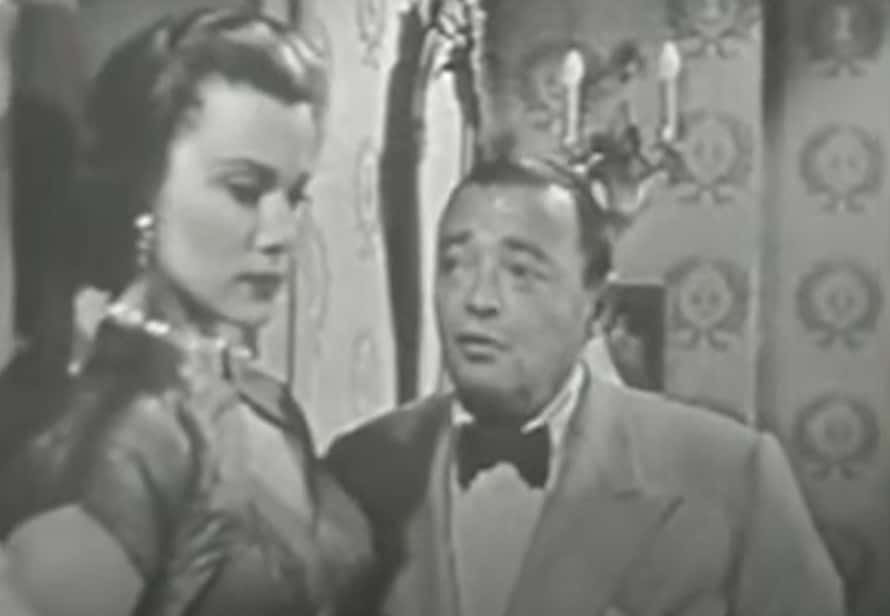 Casino Royale (1954), CBS Television Network
Casino Royale (1954), CBS Television Network
41. He Found His Happiness
Shortly after his return to the US, Lorre met and married Anne Marie Brenning. Brenning wasn’t famous, but she was just what Lorre needed. The couple remained married until Lorre’s passing and had one daughter, Catharine, together. But as we’ll see, even his happy family life almost ended in tragedy and horror, like in one of his macabre films.
42. He Switched To The Small Screen
Family life suited Lorre well and he learned not to take himself so seriously. Throughout the 1950s and 1960s, Lorre shifted his focus from film to television. He made several television appearances parodying his “menacing bad guy” characters in comedy specials that introduced his work to new generations. But some of those new fans took it too far.
43. He Had A “Son”
After Lorre’s passing, an actor by the name of Eugene Weingard entered the scene. He bore a striking resemblance to Lorre…and an unhealthy obsession with him. Weingard started referring to himself as Peter Lorre Jr., pretending to be Lorre’s son. Of course, there was no truth to the claim—but facts never stopped crazy.
44. He Had No Human Desire
In 1954, Fritz Lang, the director of M—the movie that launched Lorre’s career—came knocking. He wanted Lorre to star in his film Human Desire. Lorre could have used a comeback, but he declined the role outright. His reason had something to do with Lang throwing him down a flight of stairs twelve times two decades earlier.
45. He Lost To A Squid
Even though he was good at being bad, Peter Lorre took every opportunity to remind audiences that he wasn’t actually evil. In fact, he was actually pretty funny. While filming 1954’s 20,000 Leagues Under the Sea, Lorre joked that the giant squid had taken the role that directors usually reserved for him. A giant squid was easier to direct.
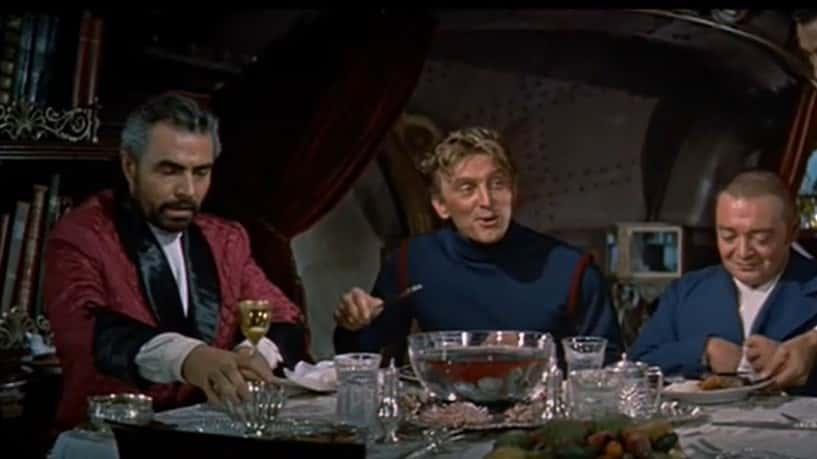 20,000 Leagues Under the Sea (1954), Walt Disney Productions
20,000 Leagues Under the Sea (1954), Walt Disney Productions
46. He Was Improv Enthusiast
According to Roger Corman, a producer on the set of 1963’s The Raven, Lorre wasn’t easy to work with—even when he wasn’t trying to recover from a morphine addiction. Lorre frustrated The Raven’s scriptwriter by adlibbing most of his lines and fighting constantly with a young Jack Nicholson. His acting days were coming to an end, however.
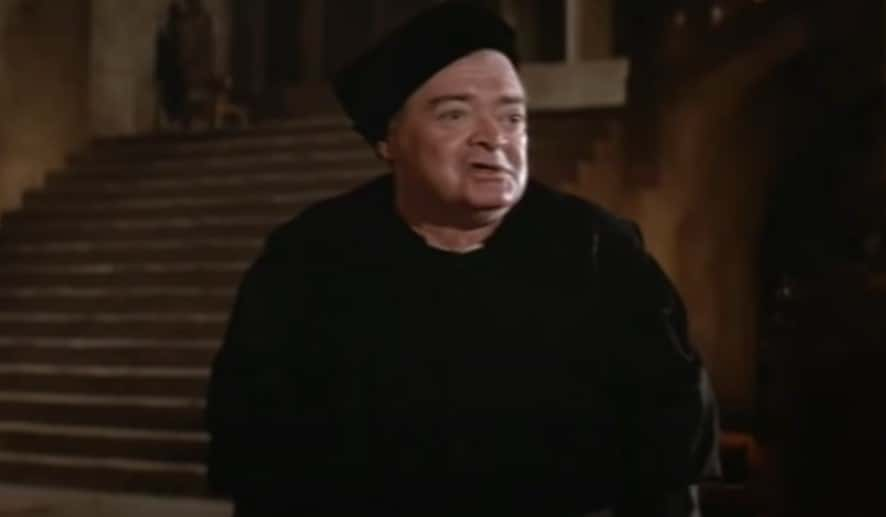 The Raven (1963), Alta Vista Productions
The Raven (1963), Alta Vista Productions
47. He Collapsed While On “Holiday”
On the set of 1960’s Scent of Mystery, Lorre collapsed during filming. By sheer coincidence alone, a doctors’ convention happened to be in town. A couple of doctors attended to the unconscious actor on his hotel room table and concluded that he only had about an hour of life left in him. But just like the bad guys in the movies—he wasn’t done yet.
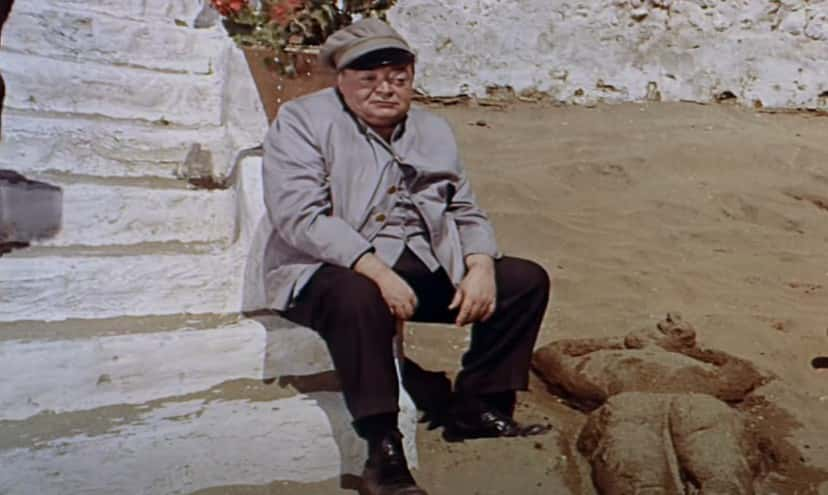 Scent of Mystery (1960), Mike Todd Jr.
Scent of Mystery (1960), Mike Todd Jr.
48. He Came Back To Life
Ironically, filming Scent of Mystery was no holiday for Lorre. After he collapsed, his condition worsened until one doctor suggested the ancient practice of bloodletting. They sliced Lorre open and only moments later, he popped up fresh as a daisy—or like Frankenstein’s monster. Apparently, he just had some blood clots.
49. He Missed His Jubilee
Peter Lorre did, eventually, meet his end. The legendary villain passed away in 1964 at the age of 59, only four days after the release of his second-to-last film, Muscle Beach. He left behind one daughter, Catharine. But, even after his sudden passing, horror still stalked his family. Bad guys in real life don’t just disappear when the credits roll.
50. His Reputation Saved His Daughter
In 1977, two men posing as officers of the law pulled over Lorre’s daughter, Catharine. Once they realized who she was, they decided to let her go. Years later, Catharine learned that those “officers” had actually been the infamous “Hillside Strangler”, Angelo Buono, and his accomplice Kenneth Bianchi. In the end, even real-life baddies respected Lorre.
Sources: 1, 2, 3, 4, 5, 6, 7, 8, 9, 10, 11, 12, 13, 14, 15, 16, 17

